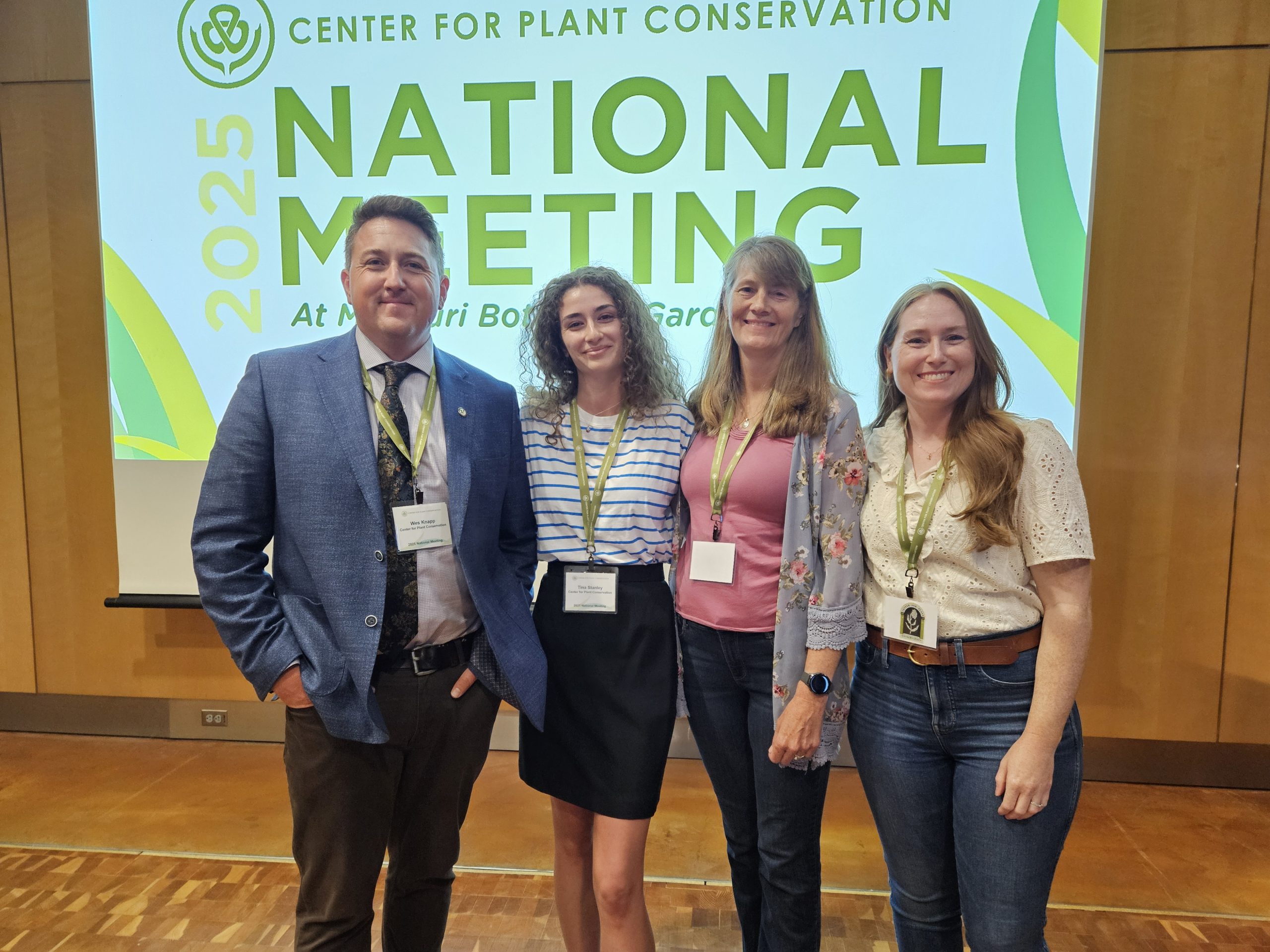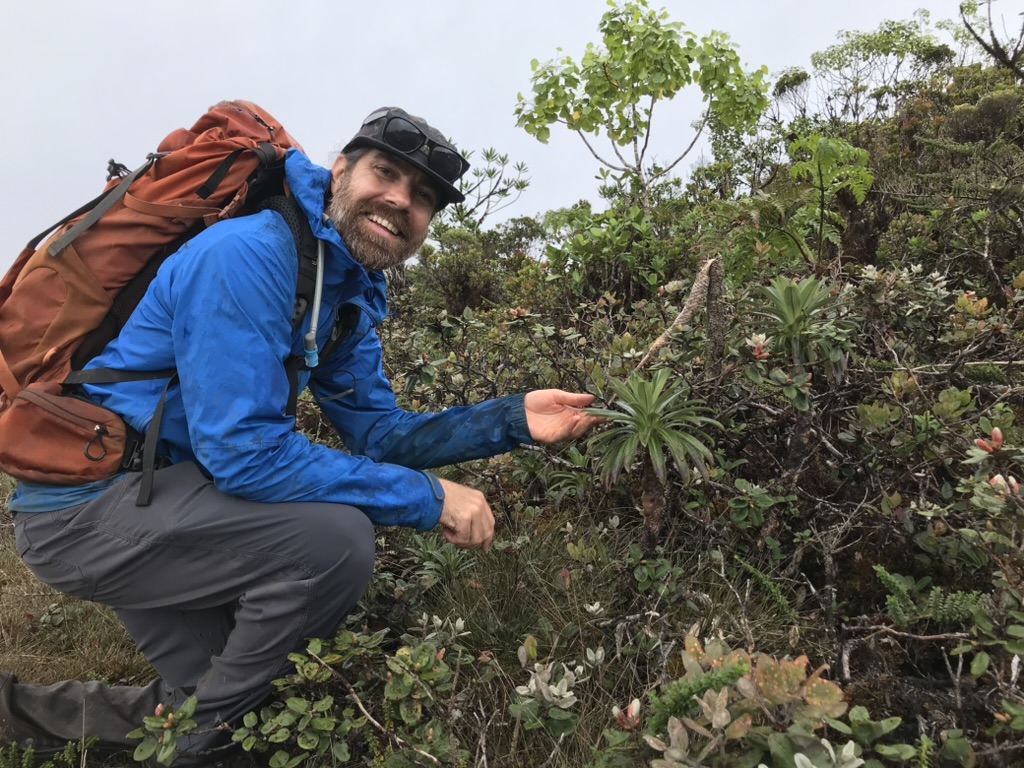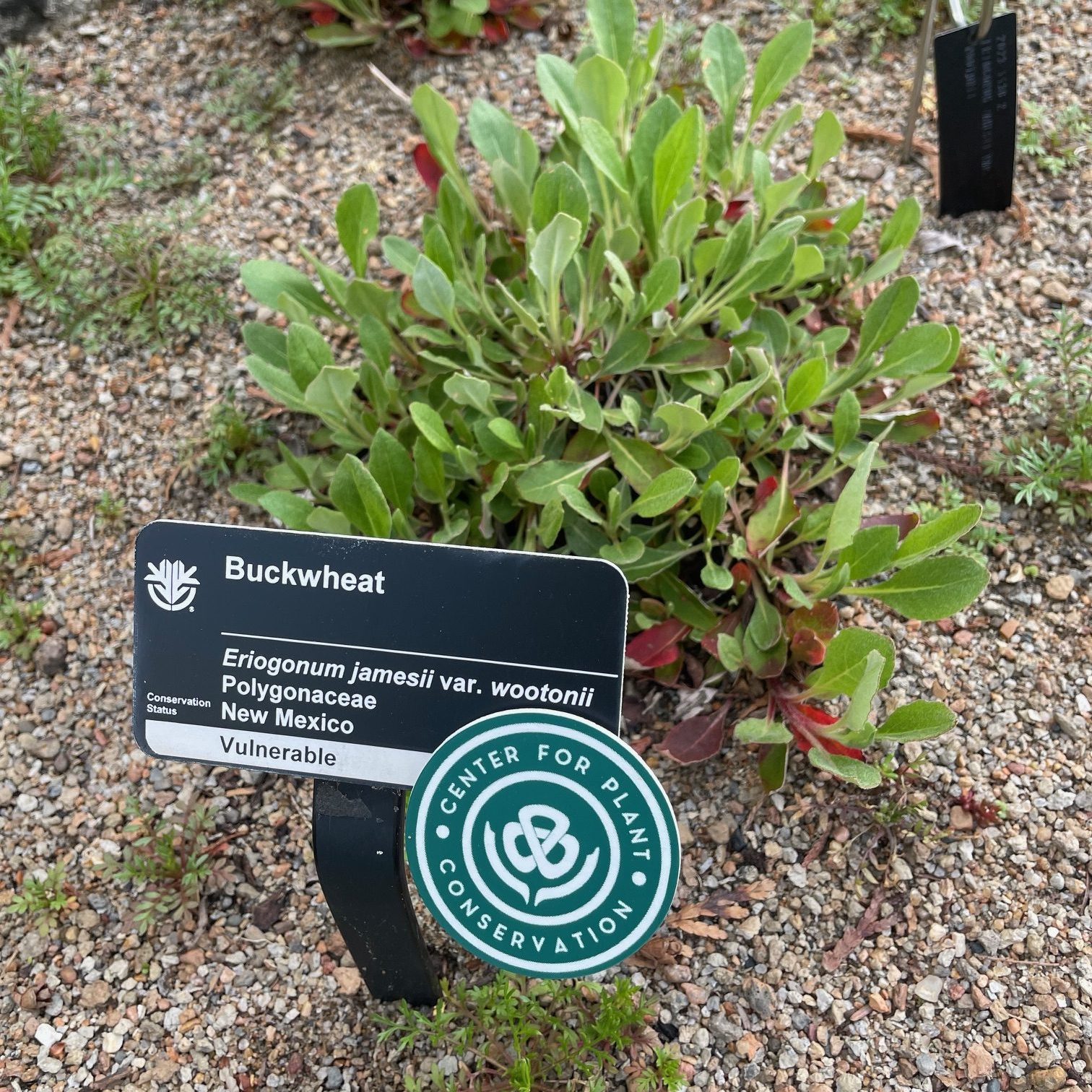Save Plants: December 2018 Newsletter
CENTER FOR PLANT CONSERVATION
December 2018 Newsletter
Welcome to the final issue of SavePlants for 2018. As we regularly do this time of year, we both reflect on the past 12 months and look forward to the New Year. This last year represents one of the most productive in recent CPC history, with a number of incredible milestones and essential accomplishments. Highlights include extensive network building both nationally and internationally, completion of the much anticipated CPC Best Plant Conservation Practices to Support Species Survival, and the addition of several new members this year into the CPC Network of Participating Institutions. We are also gearing up for future work including securing and sharing additional conservation research funding and applied work to advance CPC’s online suite of tools, now known as Plant Nucleus. In all, it has been an incredible year, one that would not have been possible if not for the exemplary efforts of our extensive network, dedicated board, hard-working national office team, and loyal donors and friends. Thank you to all. Here’s to a festive Holiday Season and to a very green New Year. With you, we will Save Plants for generations!
New Leadership in CPC
Contributed by John R. Clark, President and CEO.
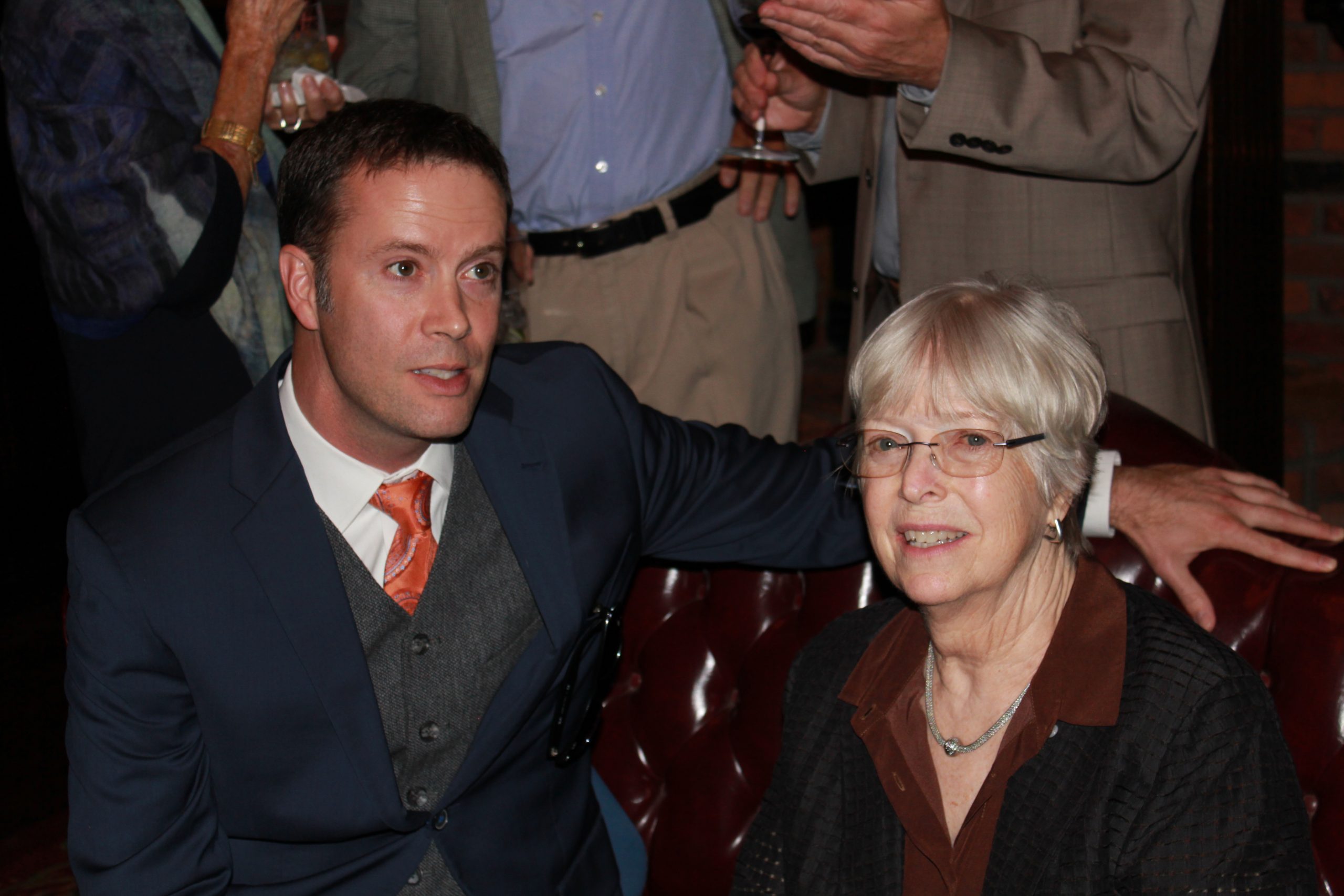
I’d like to personally welcome CPC’s new board chair, Lynde B. Uihlein, from Milwaukee, WI. She is a graduate of the University of Wisconsin-Milwaukee where she earned an MSW in social welfare. In 1990, she established the Brico Fund LLC. The Brico Fund actively and sustainably improves the civic, cultural, and natural environments by building the collective capacity of people and organizations through dynamic approaches. Lynde is actively engaged in conservation, including the restoration of a native landscape on 150 acres of Lake Michigan shoreline in Wisconsin. Lynde brings to CPC her extensive board experience including serving on the national board for the League of Conservation Voters.
Lynde has been a CPC trustee since 2015 and has served on various committees including the Executive Committee, as well as serving as First Vice Chair until her election as Chair this past September. Lynde succeeds our outgoing board chair, Dr. Peter Raven.
It is a pleasure to be working with such an engaged and thoughtful person, one who is dedicated to our efforts to Save Plants. I wish Lynde all the best in her new role with CPC. Onward!
PHOTO: President and CEO John Clark with new board Chair Lynde B. Uihlein. Photo by Joyce Maschinski, Center for Plant Conservation.
ADVANCE
The Center for Plant Conservation is a leader, bringing plant conservation practitioners together to share expertise and advancing the science-based best practices in plant conservation. In this capacity, the staff at CPC had a fruitful year built on the strength of the network.
Network-wide Collaboration Informs Plant Reintroduction
Led by Matthew A. Albrecht, an important CPC network-wide collaboration entitled, “Effects of life history and reproduction on recruitment time lags in reintroductions of rare plants” is slated for publication in the prestigious journal Conservation Biology. This study, which features unusually well‐monitored and long‐term (4 ‐ 28 years) reintroductions of 27 rare plant species by CPC participating institutions, shows that the time it takes for the next generation to emerge at a reintroduction site varies across the life history of the endangered plant. The expectation that a reintroduced population is only successful when the next generation appears means that evaluators may need to be patient, especially for long-lived species that are slow to reach reproductive maturity. We suggest that benchmarks of success in 1, 3 , 5 and 10 years after installation will differ across various plant life histories. This work highlights the good plant conservation that CPC participating institutions have done for decades. It is wonderful to see it showcased on this world-stage. See the manuscript.
Release of CPC Best Plant Conservation Practices to Support Species Survival – November
After years of collaborative work, drawing on the wide and varied expertise of the CPC network, the updated guidelines were finalized and electronically published in November. In the years since the last update, advances in research have led to an increased understanding of best practices in a variety of areas, from seed storage to reintroduction. CPC Vice President of Conservation and Science, Joyce Maschinski, led the effort to update and consolidate the practices into one comprehensive document, but the number of coauthors spans the network. Over the next year, CPC will print copies of the guidelines, make the tenants of the guidelines accessible in multi-media formats, and generally spread the word about the practices that help people save plants.
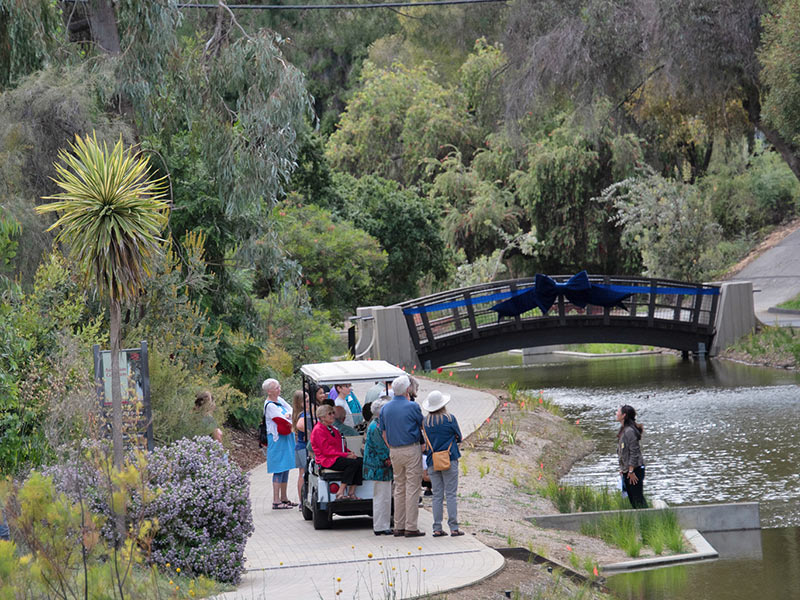
The UC Davis Arboretum and Public Garden (ArbPG) is on-campus living museum focused on having deep impact and wide community engagement with critical scientific issues by helping people use their hearts and minds to make real change in their own place in the world. Teaching gardens and scientific collections—focused on wild-collected native California plants, oaks from around the world, and demonstration gardens featuring appropriate plants for the Central Valley— are a primary focus of the 100-acre UC Davis Arboretum, the centerpiece of the ArbPG. In addition, the Arboretum & Public Garden manages the heritage/cultural landscapes, roadsides, and natural reserves of the UC Davis campus.
Since its founding in 1936, the ArbPG has been involved in plant conservation efforts throughout California, often in partnership with the more than 1700 plant scientists on campus. As we all face the new realities of a changing climate, a new partnership with CPC is critical to helping ArbPG collectively align with other botanical gardens and institutions in order to more effectively deliver on the most important strategic initiatives to conserve plants at regional, statewide, national, and international levels. Sited at a major university, we also have a special interest in working with the CPC to develop leadership training programs in plant conservation for the next generation of conservation scientists and to explore and build new partnerships focused on community engagement and impact far beyond the garden walls.
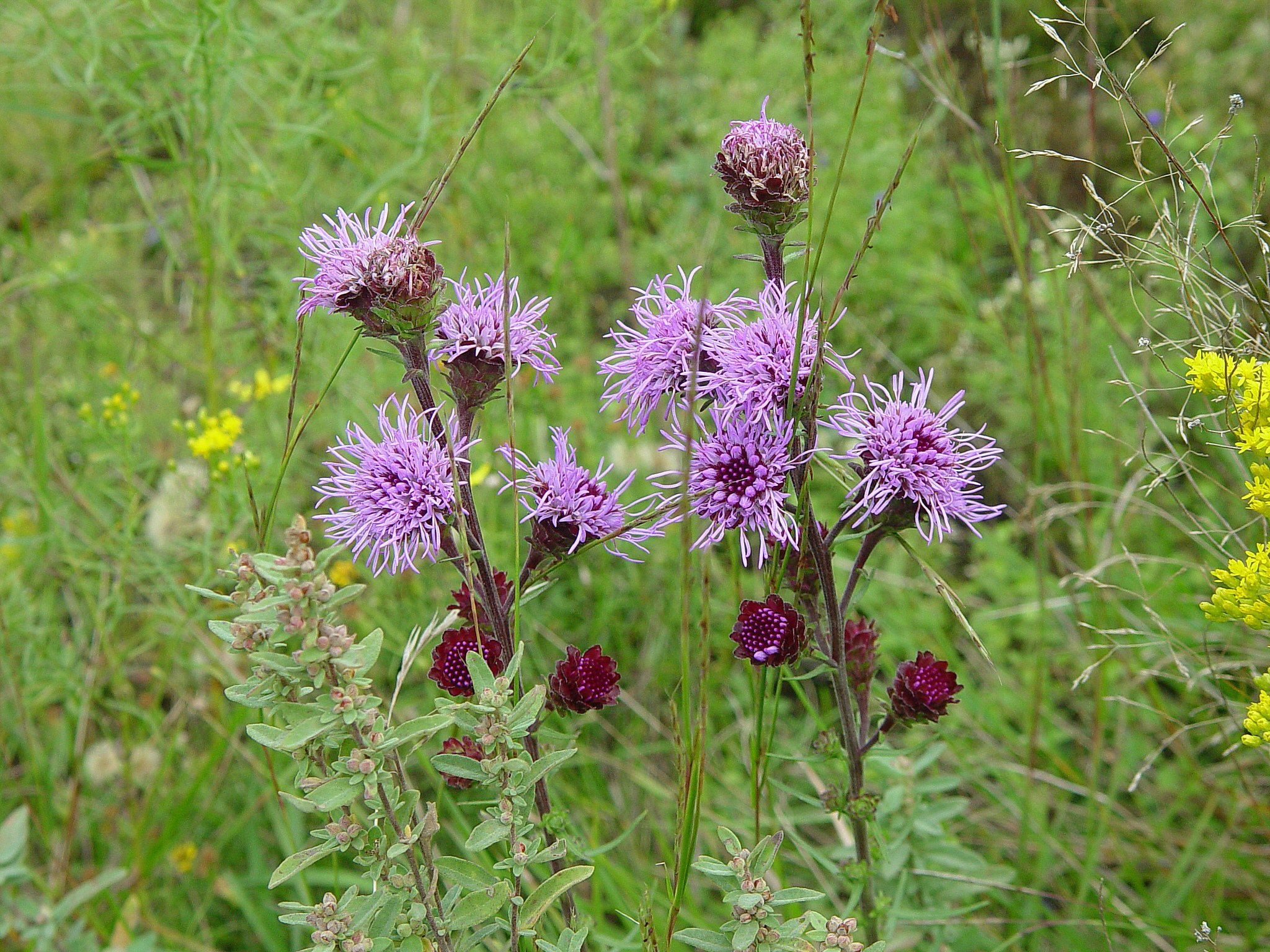
The mission of the Polly Hill Arboretum is to perpetuate the experimental tradition in horticulture established by Polly Hill by sharing knowledge of plants and scientific procedure through educational programs, research, plant conservation, and exploration. The Arboretum seeks to preserve its meadows and woodlands, to promote an understanding of its collections, and to encourage their utilization for scholarship, observation, and the enjoyment of all. The PHA is engaged in many aspects of both ex-situ and in-situ conservation, from tackling the difficult seed dormancy for North American Stewartia species to reintroducing propagules of rare plants on Martha’s Vineyard. Islands are often considered the most vulnerable to the perilous effects of climate change, and habitat fragmentation, thus with Martha’s Vineyard as a home, PHA is motivated us to be part of the solution by engaging in work that preserves plants for future generations. Bringing this motivation and excitement to CPC, Executive Director Tim Boland states, that joining “… puts us in great company with leading plant conservation organizations in the U.S. and opens up a network of new partnerships that will enable our conservation activities here on Martha’ Vineyard as well as off-Island.”
Located in Sarasota, Florida, Marie Selby Botanical Gardens’ mission is to provide an oasis of inspiration and tranquility, while furthering the understanding and appreciation of plants, especially epiphytes. They advance their mission through their core values of advocacy, integrity, financial security, stewardship, and excellence. Scientific research is integral to the Gardens’ mission and as such they strive to be the leading institution for advancing the scientific understanding and conservation of vascular epiphytes, an ecologically and economically important group of plants. Selby Botanical Gardens brings to the CPC network a dedicated and talented group of plant conservationists, a 45-year history of plant inventory, classification, and conservation in the tropics and subtropics, a collection of over 5000 species of living plants, an active herbarium, spirit and molecular labs, and an excellent library. The Garden is excited about working at a higher level with CPC member institutions than we have in the past, both locally and nationally, and sharing our resources and staff efforts with others. Conversely, they also look forward to having access to resources not currently held, such as seed-banking, and a have a greater ability to develop collaborative grant proposals to advance plant conservation.
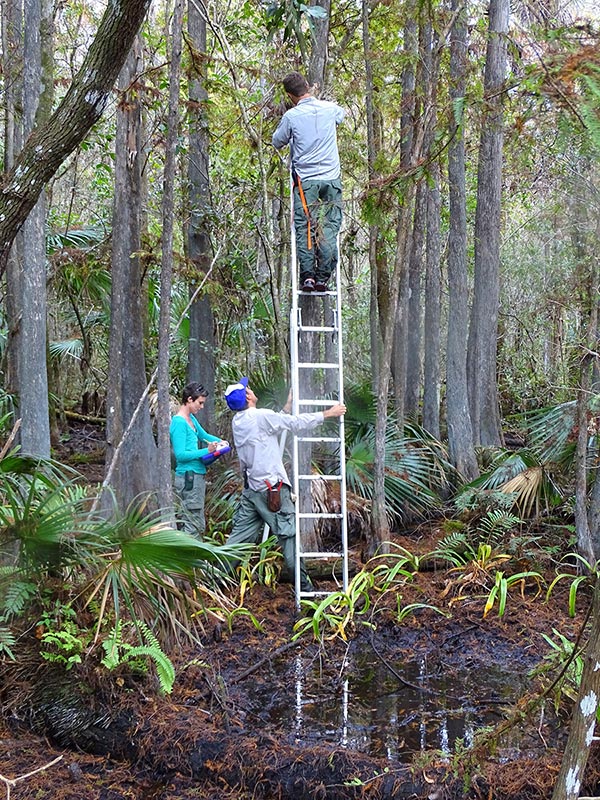
The UC Santa Cruz Arboretum & Botanic Garden works towards its mission to connect people with plants with a 135-acre living museum of rare and unique plant species, dedicated staff, committed volunteers, and a history of contributing to conservation research. Their conservation work is dedicated to the preservation of biodiversity to enable evolutionary processes to continue, focusing on California and its Central Coast ecosystems. With an active collecting program and seed bank, the Arboretum collects wild seed from rare species and sends them to long-term seed banks in the network. Their conservation work stretches to their participation in plant rescue operations, teaching students botany, horticulture and field work related to conservation stewardship, and assisting the state with mapping and classification of rare natural plant communities. In joining CPC, the Arboretum brings decades of collection building, horticultural experience and connectivity to the botanical conservation world. UC Santa Cruz research faculty and staff are re-establishing field-based programs with great facilities and proximity to foster regional conservation work. They are looking forward to being a part of a national effort to practice biodiversity conservation with all the support networks and inherent challenges.
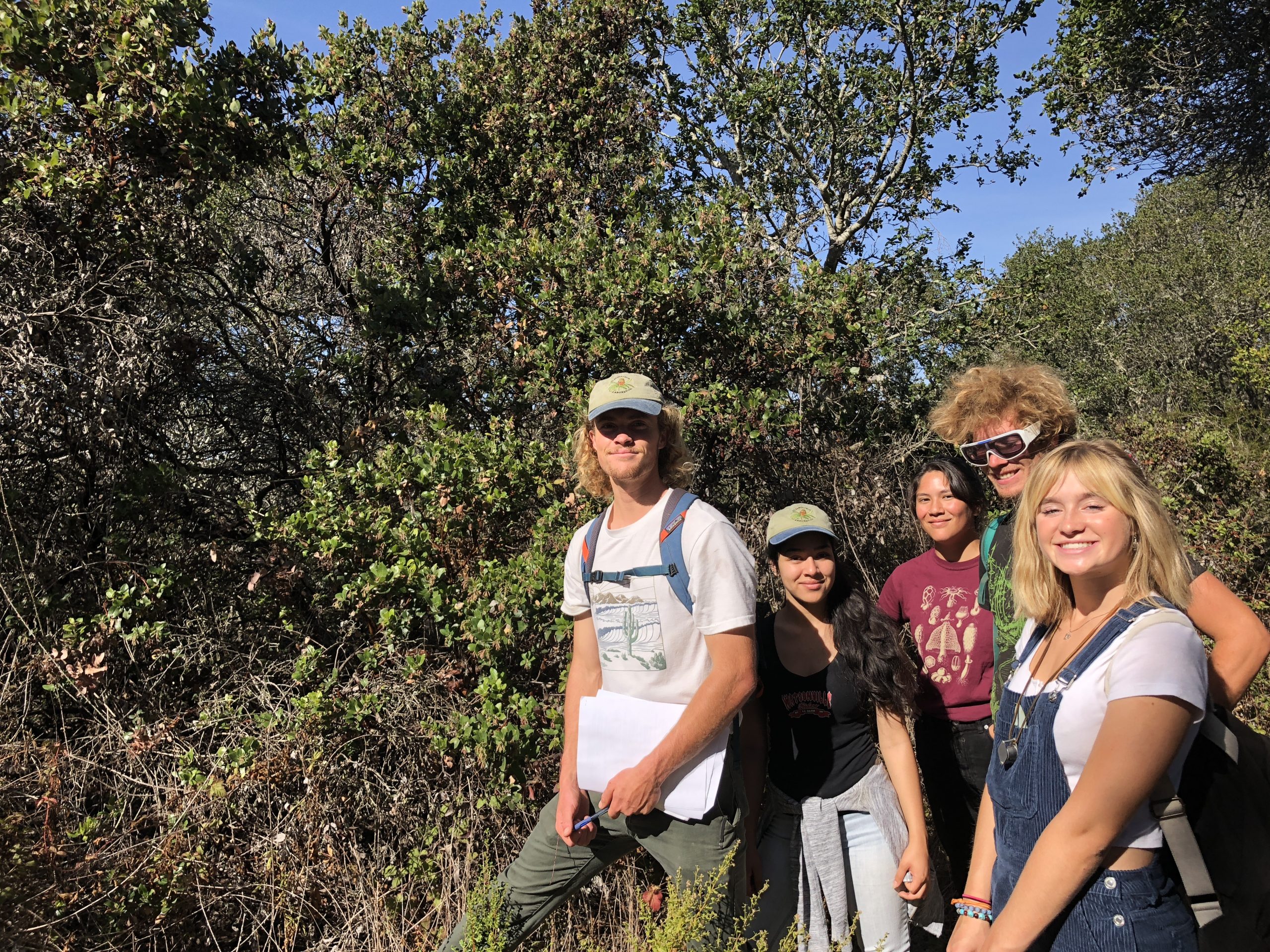
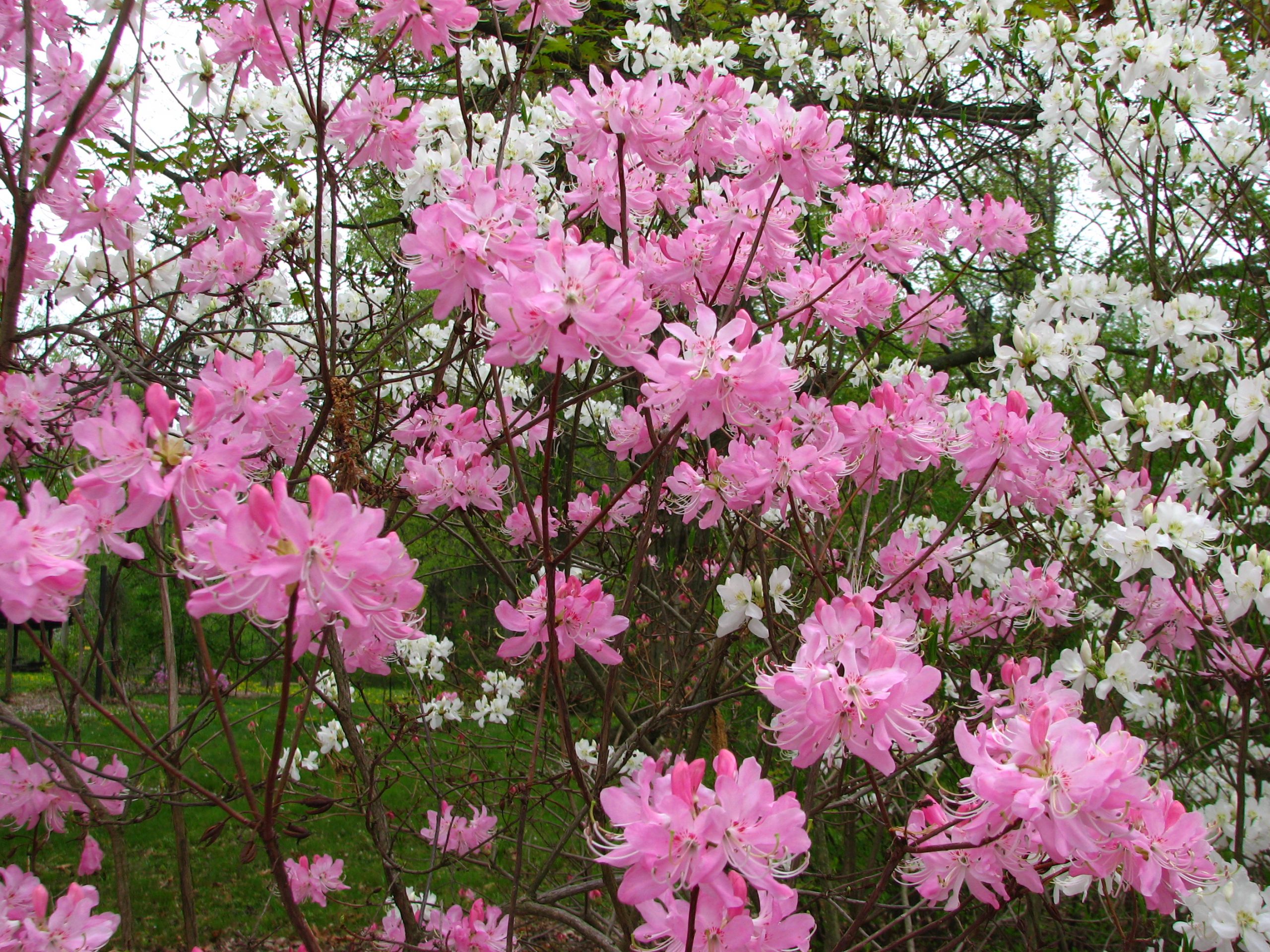
The Dawes Arboretum is committed to a strategy that helps further plant conservation locally, regionally and nationally. Our mission is to enrich lives through the conservation of trees and nature. To do so they conduct practical and scientific research on plants, ecosystems and conservation while providing programs and information that deepens understanding and creates beautiful landscapes. Joining with others working to conserve species in the greater Ohio River Valley ecosystem, the Arboretum strives to continue sharing information on the best management practices of habitat restoration to help ensure species can be conserved in place as members of CPC. The Arboretum hosts 235 accessioned plants of federally or state listed species of concern and also provides a living refuge for species in need of conservation outside their natural range. Sharing propagation techniques—both successes and failures—the organization ensures others learn from their work and as a part of the Center for Plant Conservation they are excited to learn from fellow institutions. By joining together, we will strengthen the network of committed institutions, and find the essential conservation strategies needed to conserve America’s rarest flora.
Never simply an art museum, with galleries surrounded by gardens and over a hundred acres of woodland, the Indianapolis institution Newfields has taken on the mission to enrich lives through exceptional experiences with art and nature. As CPC members they look forward to using their diverse landscape, horticulture display gardens and greenhouse to identify, cultivate, and display regionally threatened or endangered plant species. Newfields also brings the talents of their museum interpretation and education teams to the role of educating our guests on native flora. While looking forward to partnering with other Participating Institutions to identify and cultivate threatened and endangered plant species as well as to learn from their vast knowledge about how to assist in saving plants in peril, they also want to be a resource for partners in the area and provide our expertise.
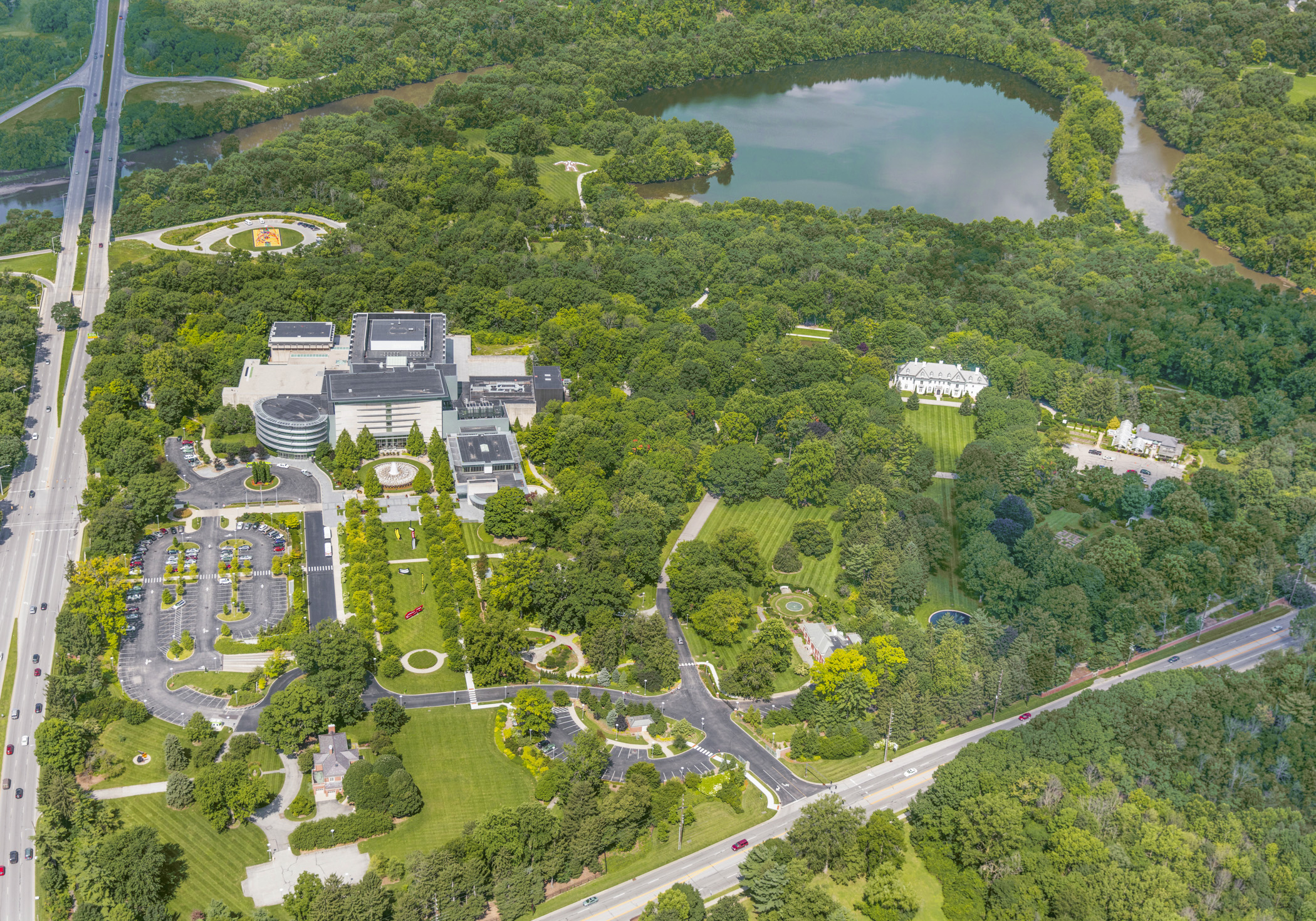
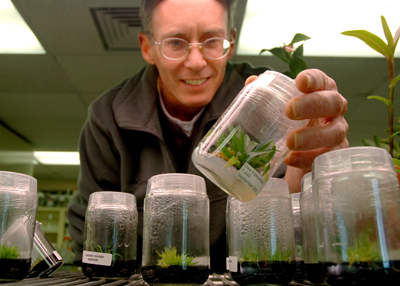
The North American Orchid Conservation Center (NAOCC) is a coalition of organizations established by the Smithsonian Institution and the United States Botanic Garden to assure the survival of, and conserve the genetic diversity of all native orchids in the U.S. and Canada. Based at The Smithsonian Environmental Research Center, which provides science-based knowledge to meet critical environmental challenges, NAOCC addresses the challenges facing native orchid conservation through a powerful model of collaboration. Together, NAOCC and its network of collaborators work to preserve habitats, create and maintain national collections of seeds and orchid mycorrhizal fungi, and conduct research on orchid ecology, conservation, and restoration. We foster and support efforts to preserve orchid habitats and work with land managers. NAOCC also engages in a variety of outreach and educational activities.
NAOCC brings the power of collaboration to orchid conservation and the CPC network through connection with our growing alliance of like-minded orchid conservation organizations and individuals. They also bring a depth of research and conservation experience from a decades-long focus on native orchid and orchid mycorrhizal fungi ecology. They are looking forward to engaging with others in the CPC network to support other research and conservation efforts and achieve our common goals.
Working primarily in the Pacific Northwest and the Southwestern U.S., the Institute for Applied Ecology (IAE) strives to conserve native species and habitats through restoration, research and education. Within this mission, working with rare plants is a central focus. IAE, with an array of government partners, tackles a variety of plant conservation topics including conservation planning, population monitoring, seed collection and banking, habitat restoration, and population reintroduction, and touts conducting research and conservation of rare plants in particular as one of their central skill sets. Their vision is a world where all people and wildlands are healthy and interact positively, biological diversity flourishes, and environmental challenges are met with a social commitment to solving problems with scientific principles. Joining CPC is a step towards that vision. As IAE aspires to become more involved in ex situ-in situ partnerships and develop their reputation in this area they hope to forge collaborations with CPC members that improve outcomes for plant conservation priorities.
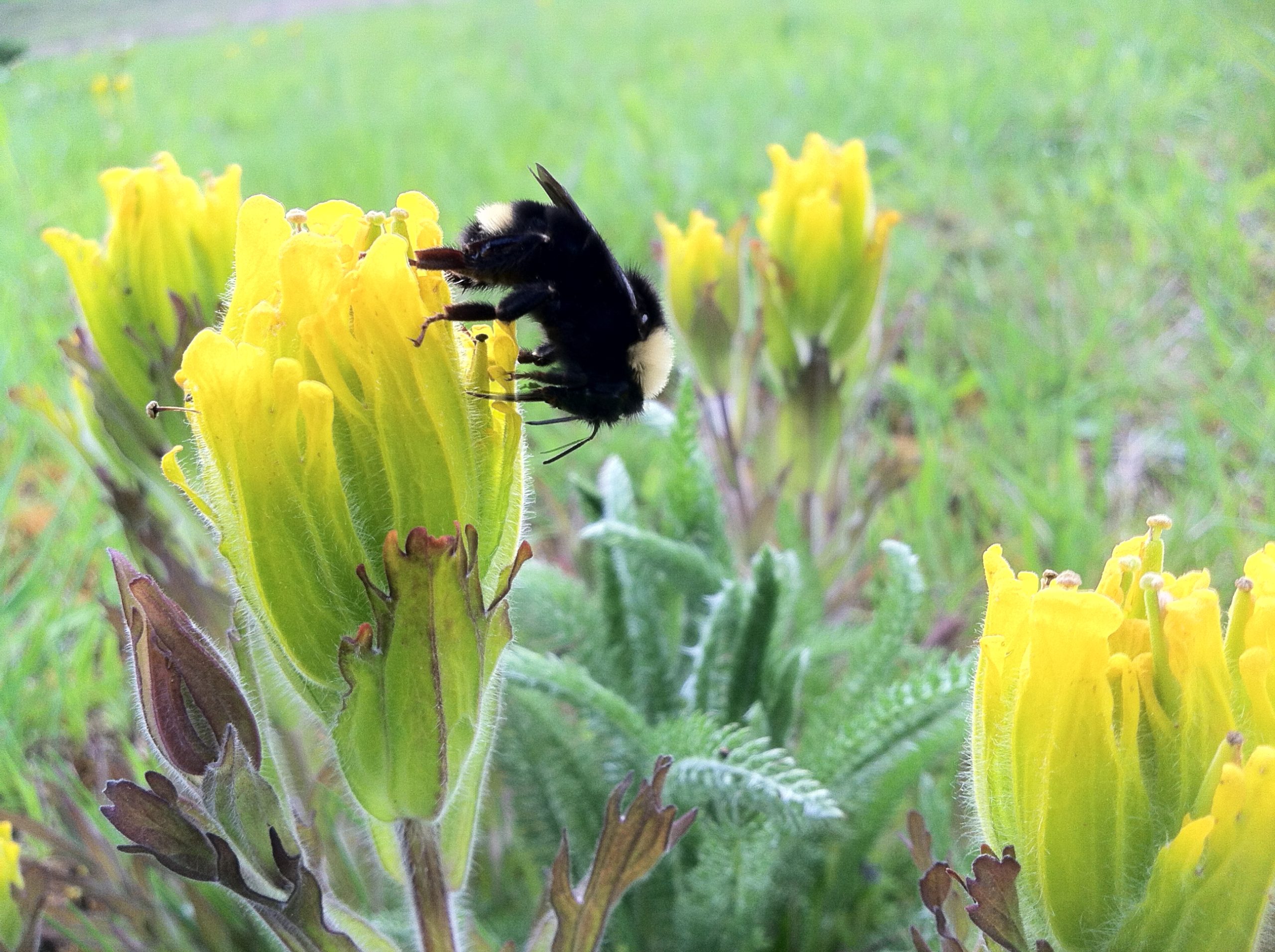
Apply
Projects spearheaded by CPC helped move the number of plants in the National Collection to 1485 and contributed to the conservation of plants nationwide. CPC was able to secure funding for the conservation efforts and work with partners to help them apply the tools and methods to save plants.
Year 5 of Kew Millennium Seed Bank Support
2018 marked the fifth year of a memorandum of understanding with the Royal Botanic Gardens, Kew, to work together to collect, study, and conserve seeds for science and conservation. Through this agreement the Kew Foundation America has funded a suite of seed collections of globally rare plants. This year the network partners from Florida to Washington were supported in making 48 maternal lines collections from across 27 different rare taxa. This brings the total of the five-year program to 291 accessions of 152 taxa. New additions to the National Collection include pineland clustervine (Jacquemontia curtisii) and Church’s wild rye.
Targeting species vulnerable to storm surge and sea level rise, Fairchild Tropical Botanic Garden made several collections of pineland clustervine, a sprawling perennial vine with white flowers. Found only on the remnants of pine rockland habitats of Miami Rock Ridge, Fairchild staff were able to make eight collections of various sizes from populations on preserves in Miami-Dade County. Collections ranged from having one to over 2,500 mother plants, demonstrating the varied size and condition of the populations.
Endemic to the western Ozark Mountain of Missouri and Arkansas, Church’s wild rye was collected by staff at Missouri Botanical Garden (MOBOT). Usually growing in alkaline soil, the rare grass can be found in dry woods on ridges and bluff as well as along river banks. Though the MOBOT collectors used the advice of regional botanists and checked herbarium records to time their collection, many fruits had already detached. Though still making important collections, the experience exemplifies the challenges of collecting seed in a variable, and changing, climate.
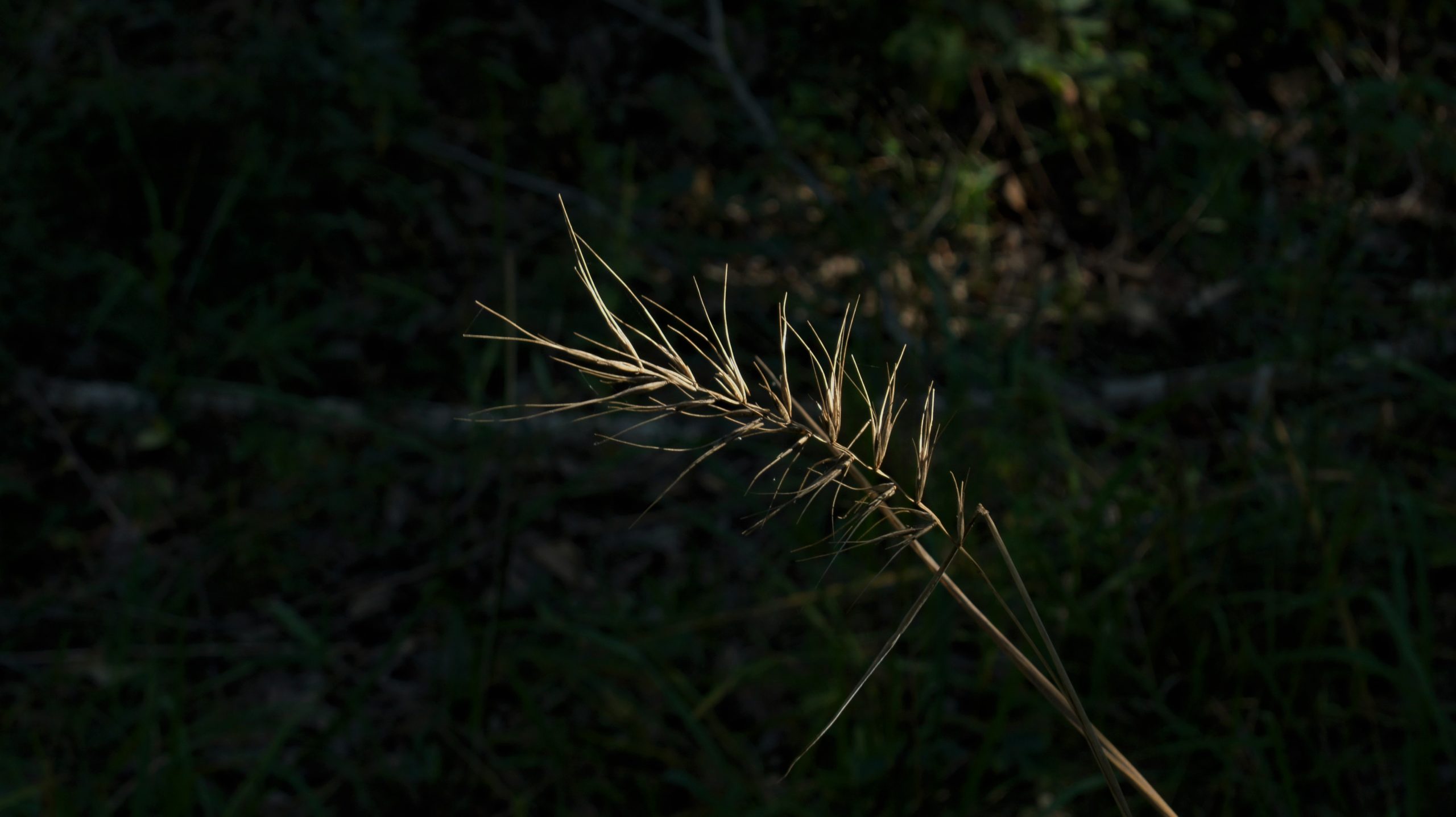
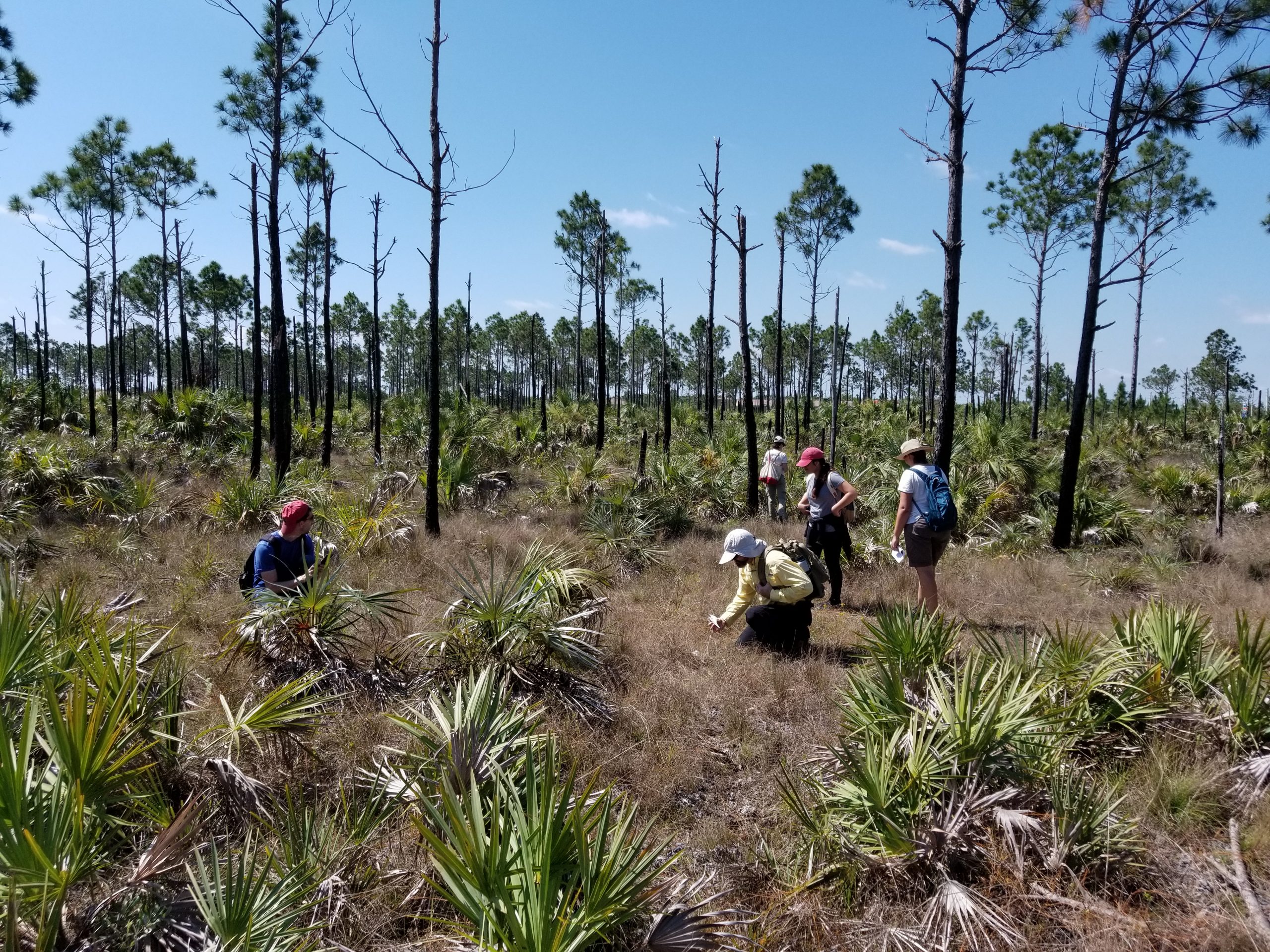
-
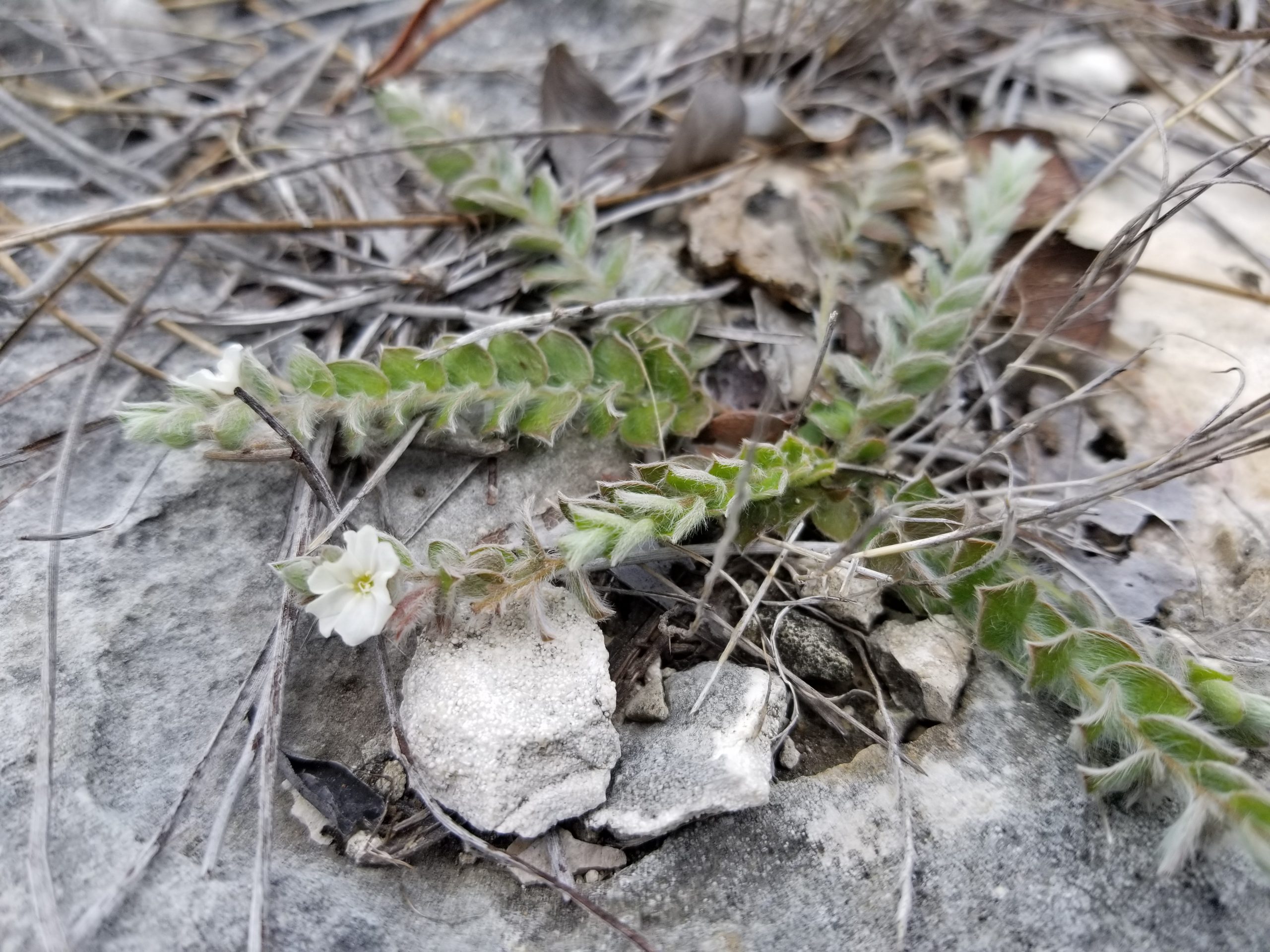
Grisebach’s dwarf morning-glory (Evolvulus grisebachii) in National Key Deer Refuge, Big Pine Key. Photo credit: J. Lange. -

Jacquemontia curtisii growing in a Miami-Dade pine rockland. Photo credit: B. Harding. -
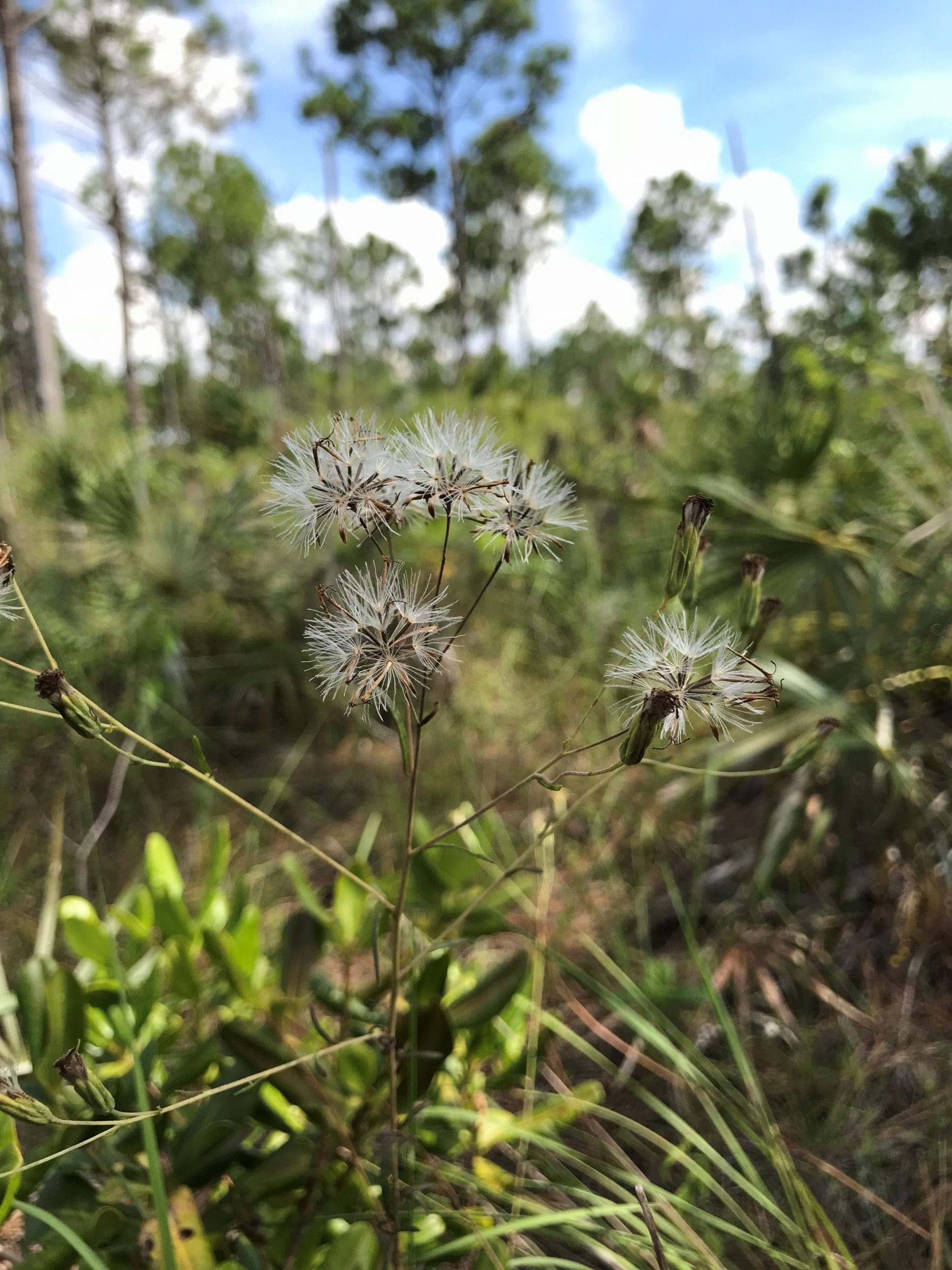
Bahama sachsia (Sachsia polycephala) seed heads in a pine rockland. Photo credit: B. Harding.
Promising Start for CPC and US Forest Service Rare Plant Seed Banking Effort
Working with regional botanist for the Southwestern Region of the US Forest Service (and former CPC Director) Kathryn Kennedy, CPC initiated a project to assess the current status of seed-banking for high-priority species on National Forest system lands, set priorities for further efforts, and begin implementation. In the first six months of the project CPC has subcontracted with participating institutions (The Arboretum at Flagstaff, Desert Botanic Garden, Lauritzen Gardens, and BRIT) to make collections and conduct seed germination trials. The project has added new species to the National Collection, such as Canadian River spiny aster (Eurybia horrida subsp. horrida) and Yavapai County buckwheat (Eriogonum ericifolium), as well as increased our understanding of existing species in the collection, namely Holy Ghost skyrocket (Ipomopsis sancti-spiritus). The staff at The Arboretum at Flagstaff examined four different accessions of the Holy Ghost skyrocket from around two decades ago through germination tests of different treatments.
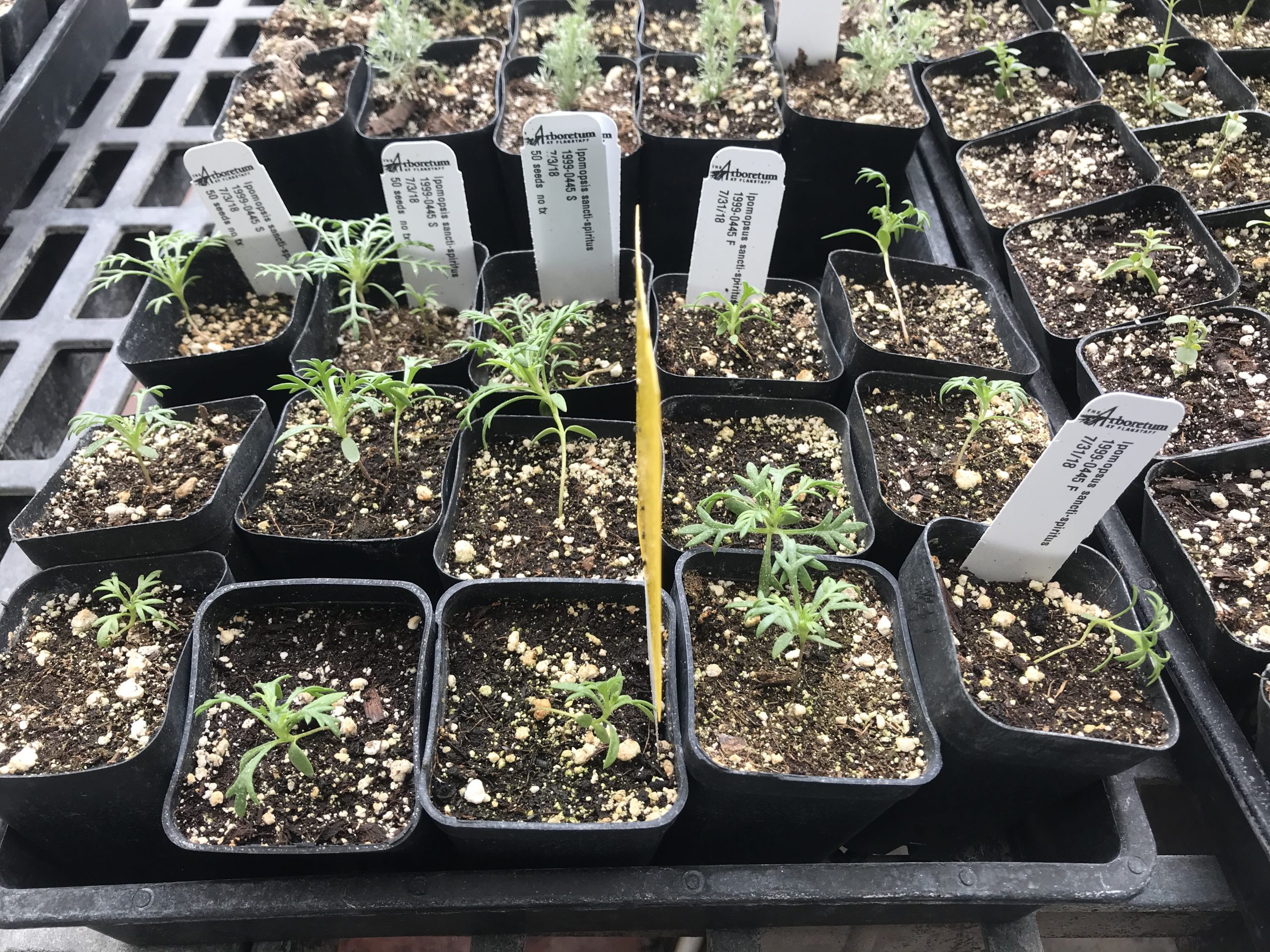
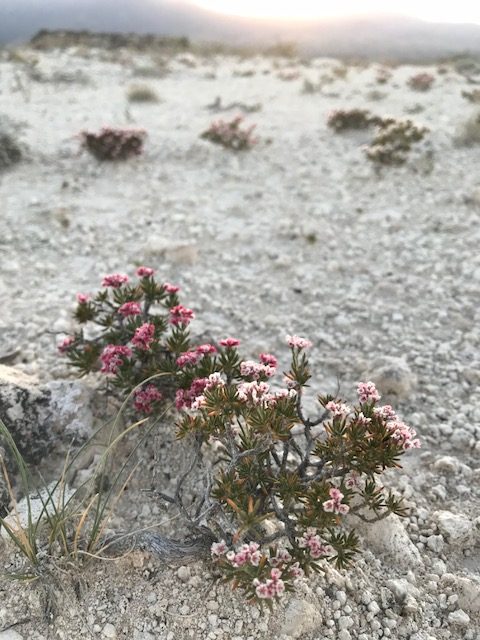
BLM Interns Train for Recovery of the Rare and Threatened
Contributed by Rhiannon Schultz, San Diego Zoo Global
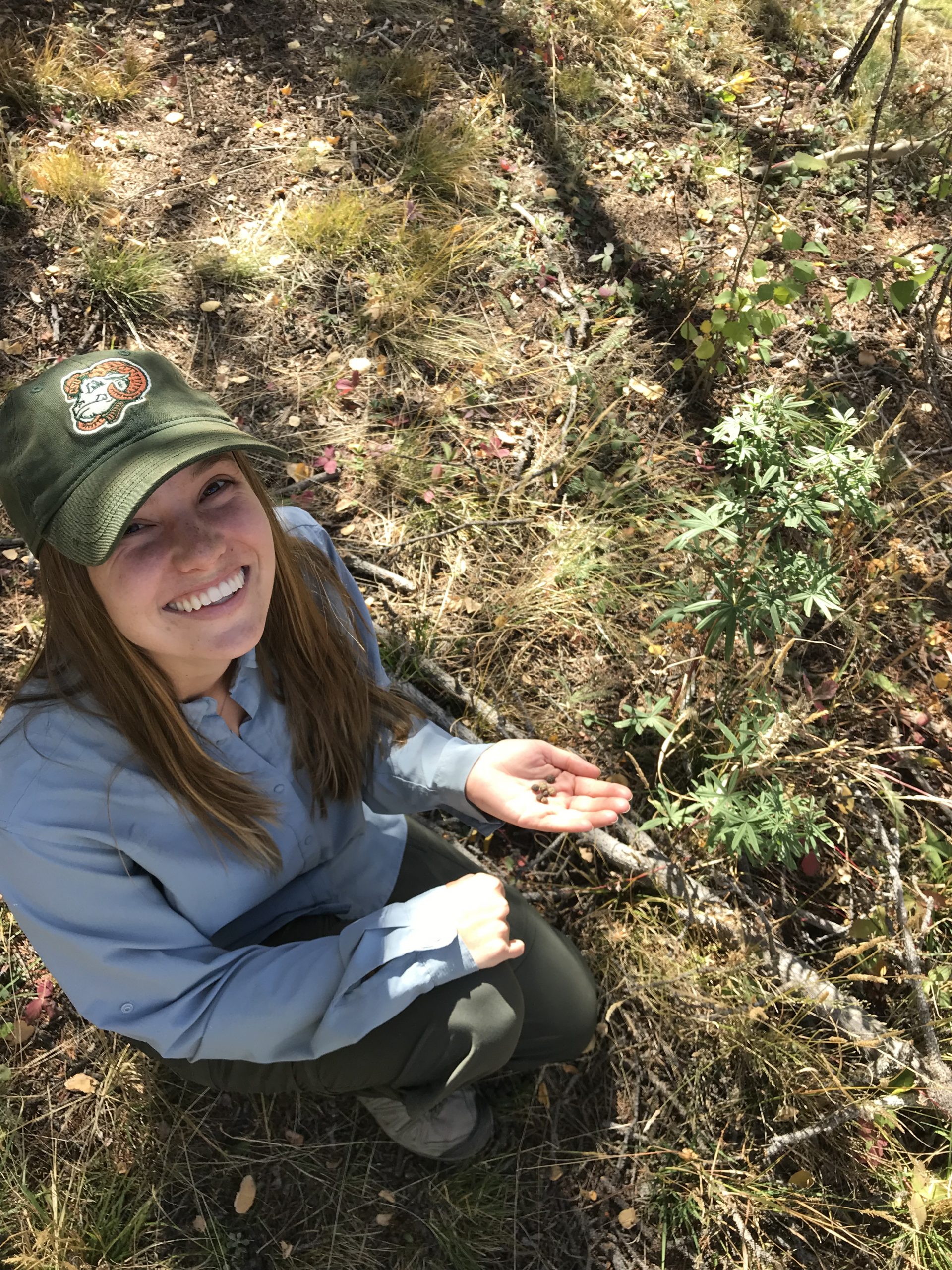
Makenna Spencer, an intern with the Royal Gorge office in Colorado worked with a variety of listed plant species, including making seed collections.
The Rookies for Recovery Program was cultivated through a partnership between the Center for Plant Conservation (CPC), the Bureau of Land Management (BLM), and the San Diego Zoo Institute for Conservation Research (SDZG). Dubbed Rookies for Recovery, the program takes post baccalaureate interns into BLM offices to work specifically with the federally threatened and endangered species in that office’s purview – to help do the management, monitoring, and recovery work these species desperately need. The program is also designed to help address a problem identified in 2011 with the Botanical Capacity Assessment Project – that a shocking 91% of agency offices reported deficiencies in the botanical training of their staff.
In its pilot year, five motivated interns with strong academic records were chosen to work in one of five BLM offices in California (El Centro, Coachella Valley, and Marina), Oregon (Grants Pass), or Colorado (Royal Gorge). Following a week long training in May covering general field techniques at San Diego Zoo Global, the interns dispersed to join their BLM staff mentors at their home offices for five months. There they tackled a variety of projects honing skills in the field, in the office, and out with the public. They conducted surveys for Mexican spotted owls, bats, and desert tortoises, became adept at using ArcGIS, entered and analyzed data, drafted NEPA documents, and citizen science proposals, and did water quality monitoring and habitat assessments. And, of course, they learned to work with plants – conducting vegetation surveys, population monitoring and demography of rare species, and even making rare plant seed collections. The plant species benefiting from the interns hard work included National Collection species Cook’s desert parsley (Lomatium cookii) and Dengener’s beardstongue (Penstemon degeneri). To learn more about the interns’ training in the field, see their blogs.
The Rookies for Recovery Program has provided many opportunities for interns and field offices alike. Collaborative programs like Rookies for Recovery are pivotal to a holistic approach in conservation and science, and will hopefully aid in closing the training gap for future biologists. We were grateful to have been a part of such an exciting new venture and look forward to seeing programs like this become more common in the future!
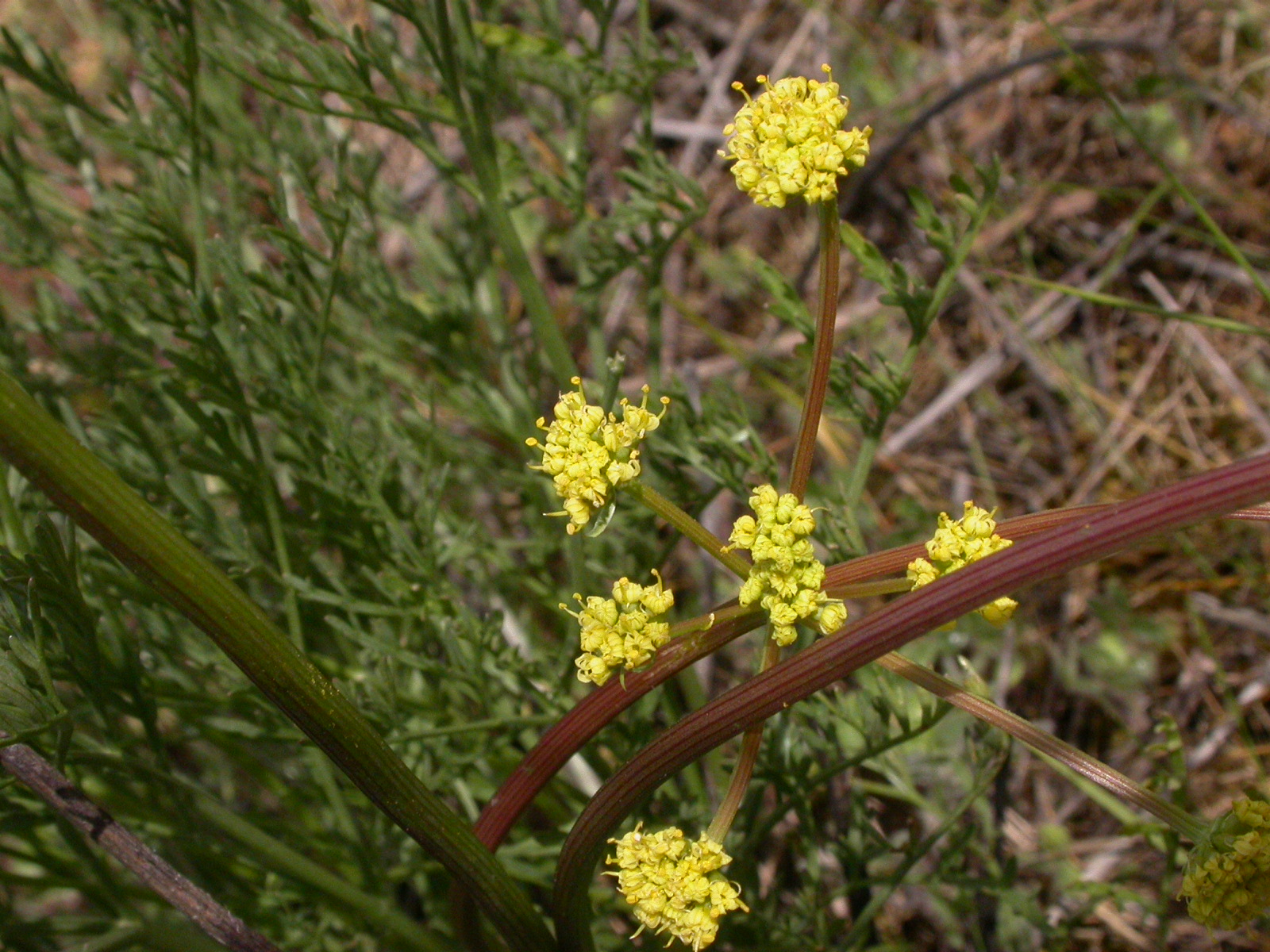

Advocate
Key to conservation success is advocating for plants and their value to humankind. This year the CPC expanded its reach by going international in sharing its best practices and helping others with advocacy, among other accomplishments.
APGA Panel Discussion on Advocacy
Vice President of Operations and Advancement, Maureen Wilmot, assembled a panel including board member, Lindsay Marshall, and leaders from many CPC Participating Institutions to discuss The Nature of Advocacy at Public Gardens during June’s American Public Garden Association’s meeting. In serving their communities and natural environments, gardens often have to grapple with the roles of advocacy and lobbying within their institution. Recognizing a need to share experiences and answer questions regarding these issues, CPC took the lead to fill this need. The well-attended session covered a spectrum of topics and advocacy activities, clarified what is allowed as 501 (c)(3) nonprofits, and outlined the process of passing conservation legislation.
Sharing Our Progress towards UN Convention on Biological Diversity Goals
Contributed by John R. Clark, President and CEO
CPC President and CEO, Dr. John Clark, attended the Global Partnerships in Plant Conservation meeting in Cape Town, South Africa, this August. The original Global Strategy for Plant Conservation (GSPC), introduced in 2002 as part of the UN Convention on Biological Diversity (CBD), set 16 targets in plant conservation to be achieved by 2010. In October 2010, an updated and revised strategy for 2020 was adopted by the parties to the CBD. To help nations meet the targets, a consortium of international and national plant and conservation agencies have formed the Global Partnership. The Partnership is working to implement the GSPC and provide tools and resources on how each country can plan and act to meet the targets. John presented the current state of plant conservation in North America, with a focus on the CPC network and our collective achievements in securing over one third of the imperiled plants in the US and Canada.
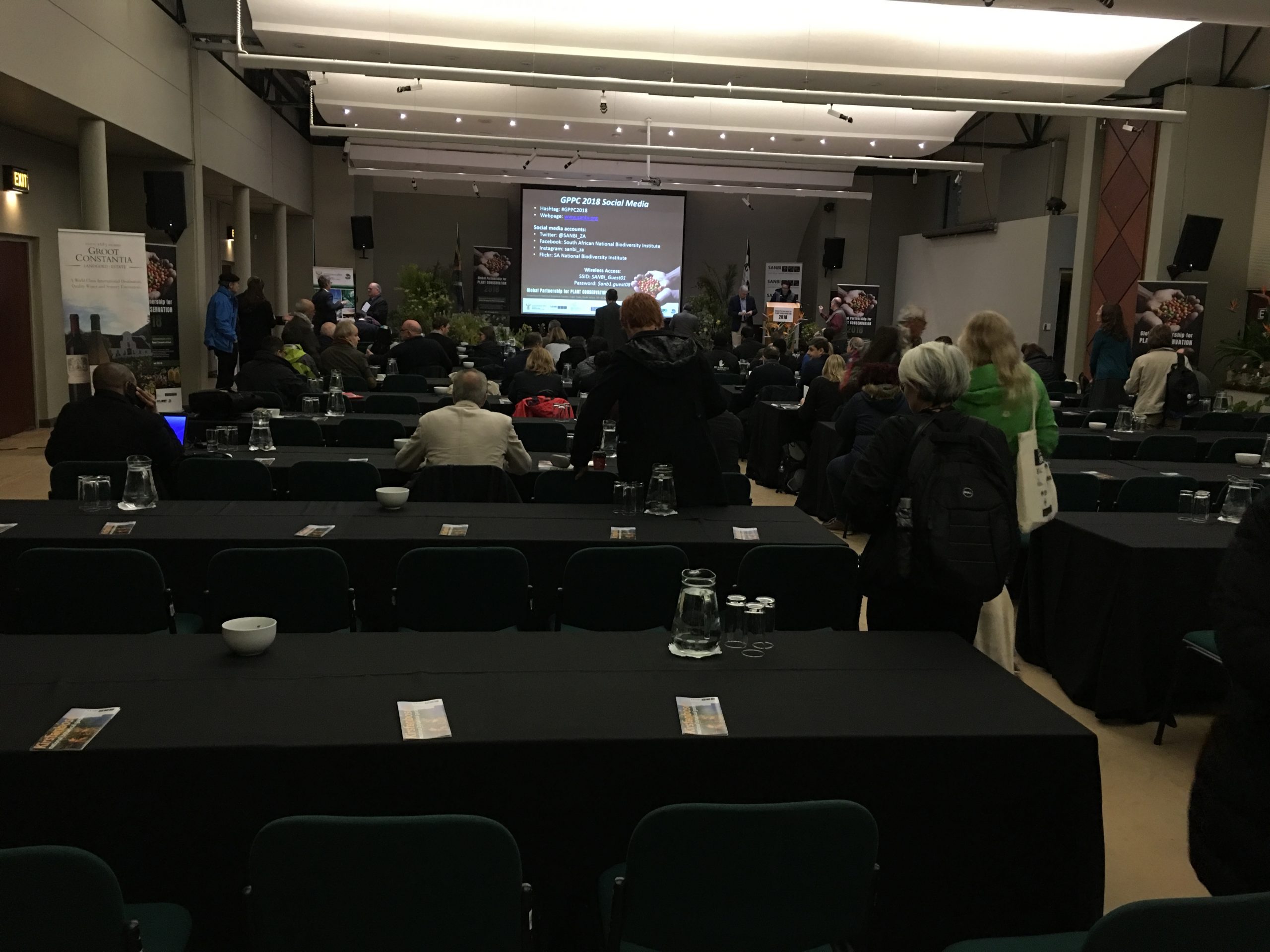
Reintroduction Workshop in Seoul, South Korea
Contributed by Joyce Maschinski, Vice President of Conservation and Science
 CPC expands its influence in many ways. Building upon good relationships with plant conservation colleagues in South Korea, Joyce Maschinski, CPC Vice President of Conservation and Science, and Matthew Albrecht, Missouri Botanical Garden, presented a workshop on Rare Plant Reintroduction at Shingu Botanic Garden near Seoul, South Korea, in September. Hosts Dr. Sungwon Son, Korea National Arboretum, and Dr. Yong-Shik Kim, Chollipo Arboretum, envision strengthening a regional conservation network similar to the CPC. Over 100 students from South Korea, Uzbekistan, Turkmenistan, Tajikistan, Krygyzstan and other southeast Asian countries attended. Thankfully, simultaneous translation made it possible for non-English speaking students to understand our presentations and activities. The topics covered included preparing for reintroductions, genetic considerations, selecting appropriate recipient sites, and monitoring that coincide with updated sections of the new guidelines CPC Best Plant Conservation Practices to Support Species Survival. Among the most insightful questions asked was one by a young high school student, “Why do plant reintroductions fail?” And Matthew gave a brilliant answer, “If you conduct a reintroduction as an experiment so that you can learn something from it, it will never be a failure.” Our hosts are interested in pursuing translation of our reintroduction guidelines and want the next workshop to feature monitoring.
CPC expands its influence in many ways. Building upon good relationships with plant conservation colleagues in South Korea, Joyce Maschinski, CPC Vice President of Conservation and Science, and Matthew Albrecht, Missouri Botanical Garden, presented a workshop on Rare Plant Reintroduction at Shingu Botanic Garden near Seoul, South Korea, in September. Hosts Dr. Sungwon Son, Korea National Arboretum, and Dr. Yong-Shik Kim, Chollipo Arboretum, envision strengthening a regional conservation network similar to the CPC. Over 100 students from South Korea, Uzbekistan, Turkmenistan, Tajikistan, Krygyzstan and other southeast Asian countries attended. Thankfully, simultaneous translation made it possible for non-English speaking students to understand our presentations and activities. The topics covered included preparing for reintroductions, genetic considerations, selecting appropriate recipient sites, and monitoring that coincide with updated sections of the new guidelines CPC Best Plant Conservation Practices to Support Species Survival. Among the most insightful questions asked was one by a young high school student, “Why do plant reintroductions fail?” And Matthew gave a brilliant answer, “If you conduct a reintroduction as an experiment so that you can learn something from it, it will never be a failure.” Our hosts are interested in pursuing translation of our reintroduction guidelines and want the next workshop to feature monitoring.
Building Platforms for Sharing Conservation Know-how
In 2018, CPC secured an IMLS National Leadership Grant to leverage the power of the network to better share the collective knowledge of how to save plants in peril. Fulfilling the grant proposal will require a substantial amount of coordination between staff, conservation officers, and contractors as we develop new content and expand the CPC website. Spanning three years, the $491,000 grant is just the first step in CPC’s plans to use the power of the internet to strengthen the network. CPC recently announced, and began fundraising, for an ambitious effort to design and build the tools and technologies needed to save more plants. This project is known as Plant Nucleus. Look for progress on both the IMLS funded project and Plant Nucleus in 2019!
Spencer Crews
Recently retired, Spencer Crews is still active with the garden that, as its executive director for 23 years, he helped build. Mr. Crews brought Lauritzen Gardens into the CPC network to ensure their conservation program was adopting the highest standards, and as a board trustee, he looks forward to welcoming more institutions into the fold.
Where did you grow up? What is your favorite hometown plant?
I grew up in St. Louis, Missouri where I spent many happy hours at the Missouri Botanical Garden participating in their summer youth programs. My favorite hometown plant is the bald cypress (Taxodium distichum), which I first remember admiring at the garden because of its delicate gracefulness and great size.
When did you first fall in love with plants?
I cannot remember a time when I did not love plants. Even at a very young age I was growing plants on a basement window ledge that I had learned how to “start” from my grandmother. It seemed almost like magic that you could take a small piece of a plant and start a new one from it. It still seems pretty amazing to me today even though I understand the process.
What was your path to becoming Director of a botanical garden (i.e., education, career path)?
My career path has been a combination of positions in the fields of landscape architecture and horticulture, including the opportunity to work for Missouri Botanical Garden (St. Louis, MO), Longwood Gardens (Kennett Square, PA) and Powell Gardens (Kansas City, MO). The majority of my career, 23 years, has been as the Executive Director for Lauritzen Gardens. Academically, I studied horticulture at Longwood Gardens, landscape architecture at Iowa State University and public administration at the University of Missouri, Kansas City.
When you aren’t busy saving plants, what do you like to do with your free time?
My favorite free time activity is my annual winter escape to the Cayman Islands where I can flee the long, cold and colorless Nebraska winters by exploring the beauty of the underwater natural world and taking in all the vibrant colors of the tropical environment.
When did your garden become a CPC Participating Institution? Do you know – and can you share – the impetus for joining?
Lauritzen Gardens began its plant conservation program in 2010 and two years later applied for membership as a Participating Institution with CPC. In 2013, we joined the other 38 PI’s to further the efforts of plant conservation nationwide.
The impetus for joining CPC was to participate with the leading plant conservation organization in North America in preserving the plants in our region. We wanted to adopt the highest standards and best practices in the field and CPC was our way of learning about them. The requirements to become a PI, to have board and staff commitment to the endeavor, also was instrumental in us establishing plant conservation as an integral part of the garden’s mission.
In your opinion, how has your garden benefited from being a CPC participating institution?
The opportunity to network with other professionals in the field has been the most valuable benefit of membership in CPC. Additionally, the garden’s involvement has given credibility to our programs and assisted us in establishing partnerships with other organizations and landowners.
What aspect of your garden and its work are you most proud of?
I am most proud of the garden itself. In two short decades the garden has grown from an undeveloped 70-acre site into an example of the regional beauty of the Great Plains.
What accomplishment are you most proud of achieving as Director of your garden?
Building the garden from the ground up to become an important asset for our community, state and region.
What is the biggest challenge you face as Director of your garden?
Introducing our community to the idea and benefits of building a botanical garden in Omaha, which had never had one before.
What do you think is the single most important thing your garden does to save plants?
We educate and inform our community and visitors of the importance of plant conservation. We advocate for plants and their place in the environment.
What is your favorite National Collection species?
The blowout penstemon (Penstemon haydenii) is such a beautiful plant that grows in a most inhospitable place. Its habitat is a disturbed sand dune, a blowout, which after a relatively short period of time will become stabilized and revegetated, thus no longer providing a suitable environment for the plant to survive. It sure demonstrates the meaning of the phrase “bloom where you are planted”, and it needs to do it quickly, before the blowout closes in.
Why do you think it is important for Garden Directors to be represented on the Board?
Garden directors can provide a valuable perspective to the board from the viewpoint of someone who is managing plant conservation efforts at our own institution. We are aware of the challenges our programs and not-for-profit organizations face and can advise other members of the board based on those experiences.
What prompted you to agree to become a Trustee for CPC? What unique perspective do you think you bring to the board?
I was happy to accept the invitation to join the board, which was extended to me by Dr. Peter Raven. It was an honor to be asked.
My unique perspective is from someone who has had the recent experience of working with our Director of Conservation, Jim Locklear, to conceive, initiate and institutionalize our plant conservation program.
What excites you the most for CPC moving forward?
The most exciting thing I see for the future of CPC is widening our network of participating institutions. I believe that the more organizations we can have be a part of CPC, the better positioned we are to “Save Plants”.
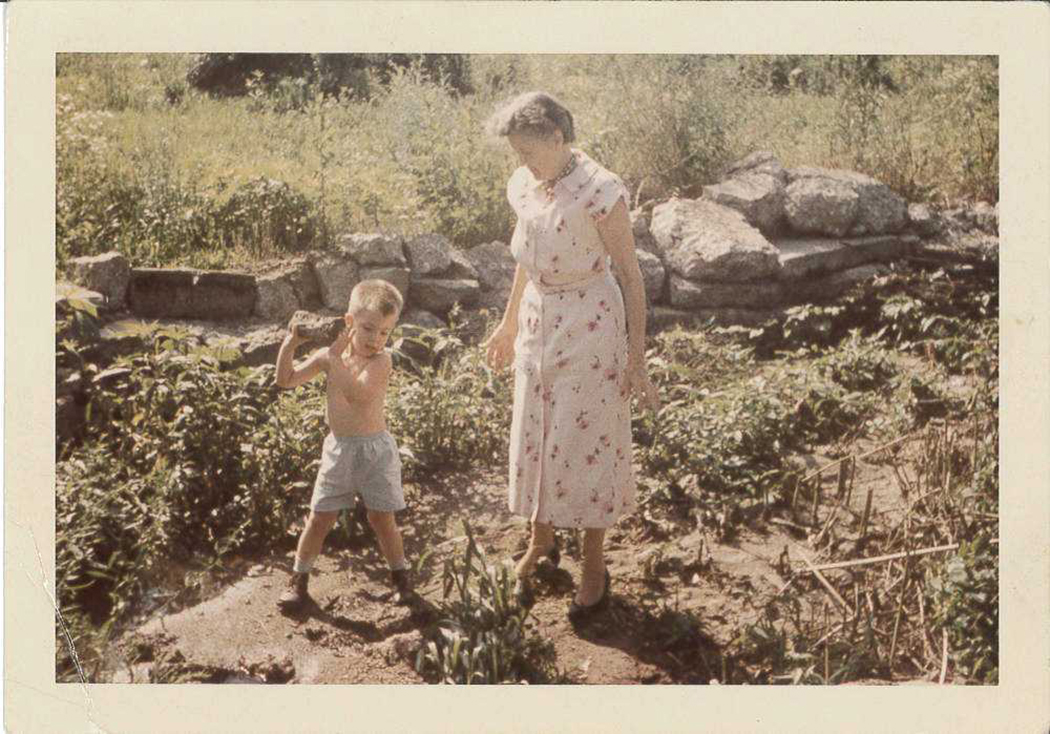
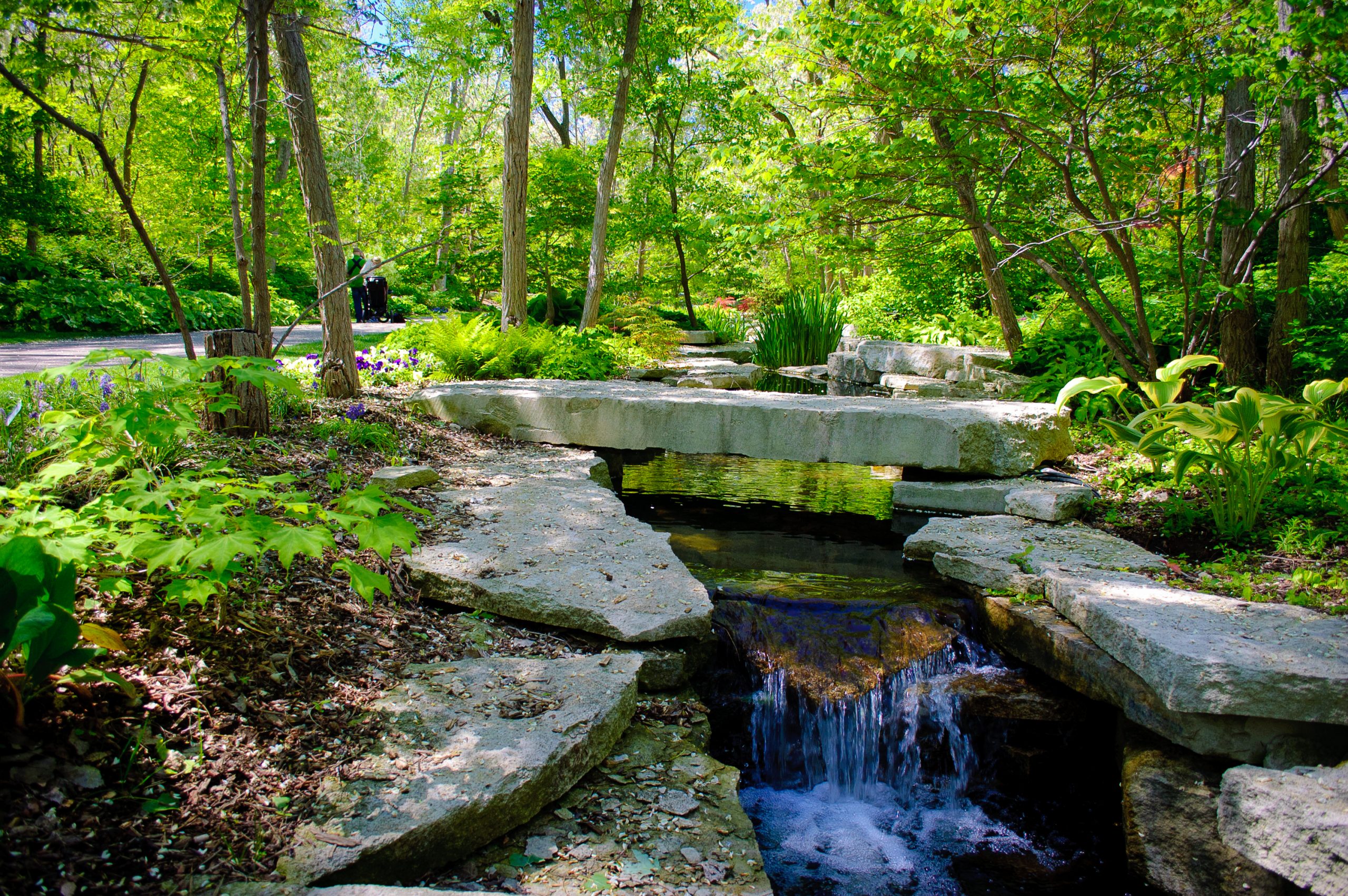
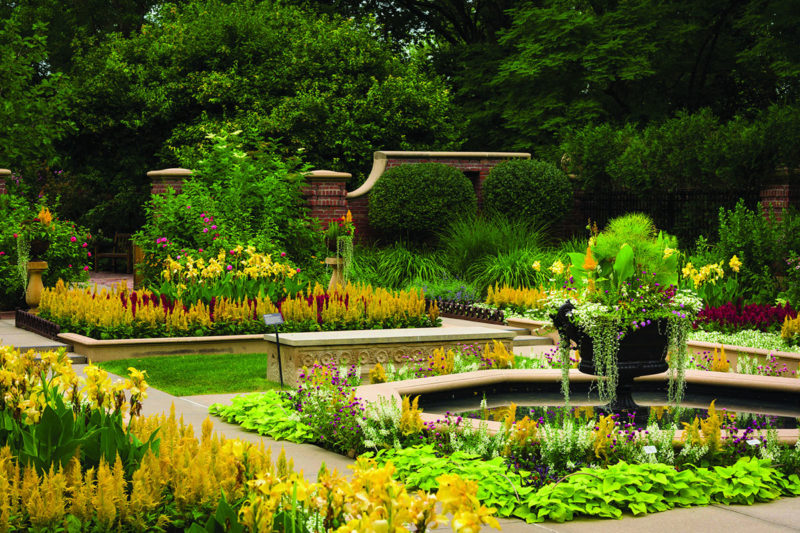
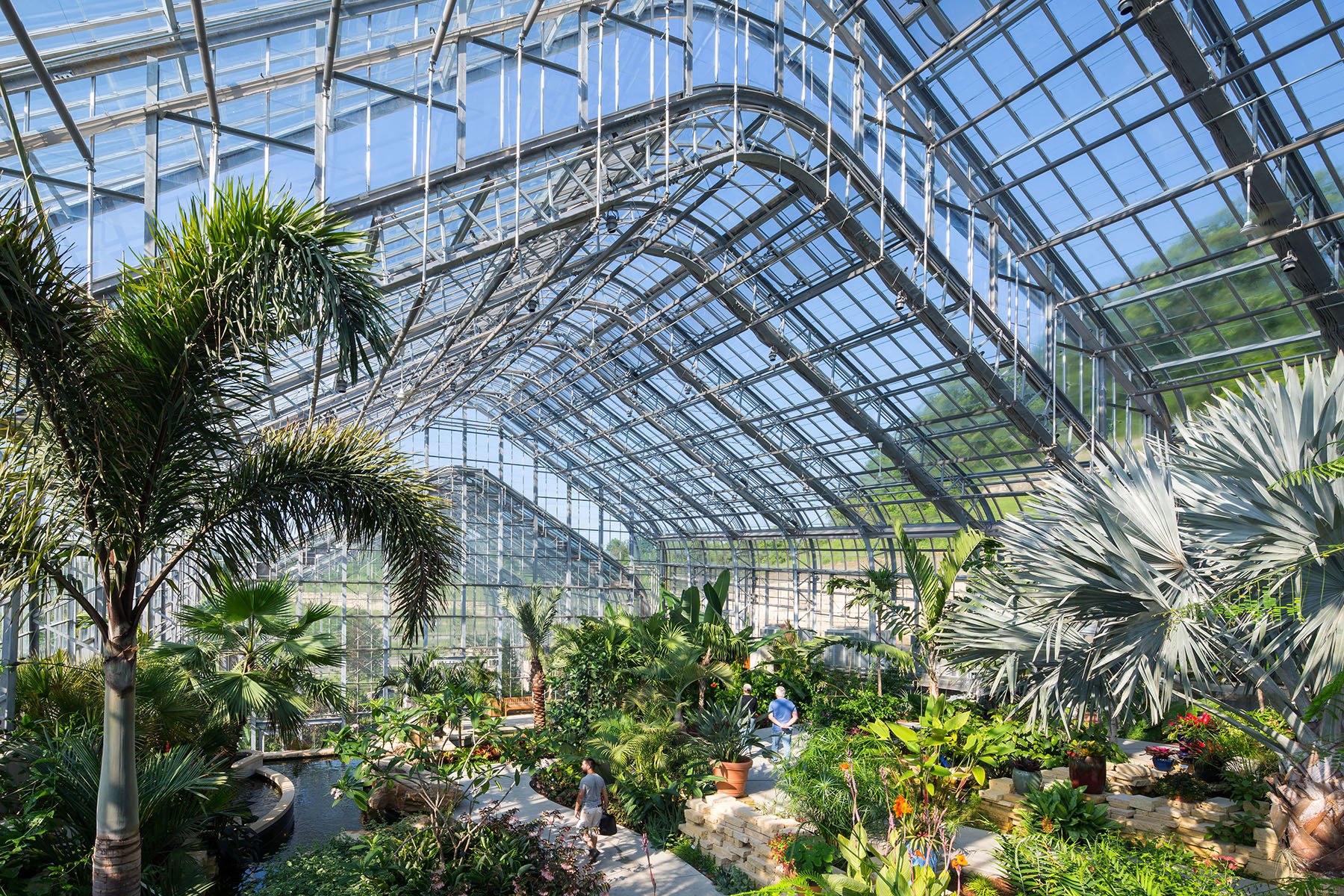
-
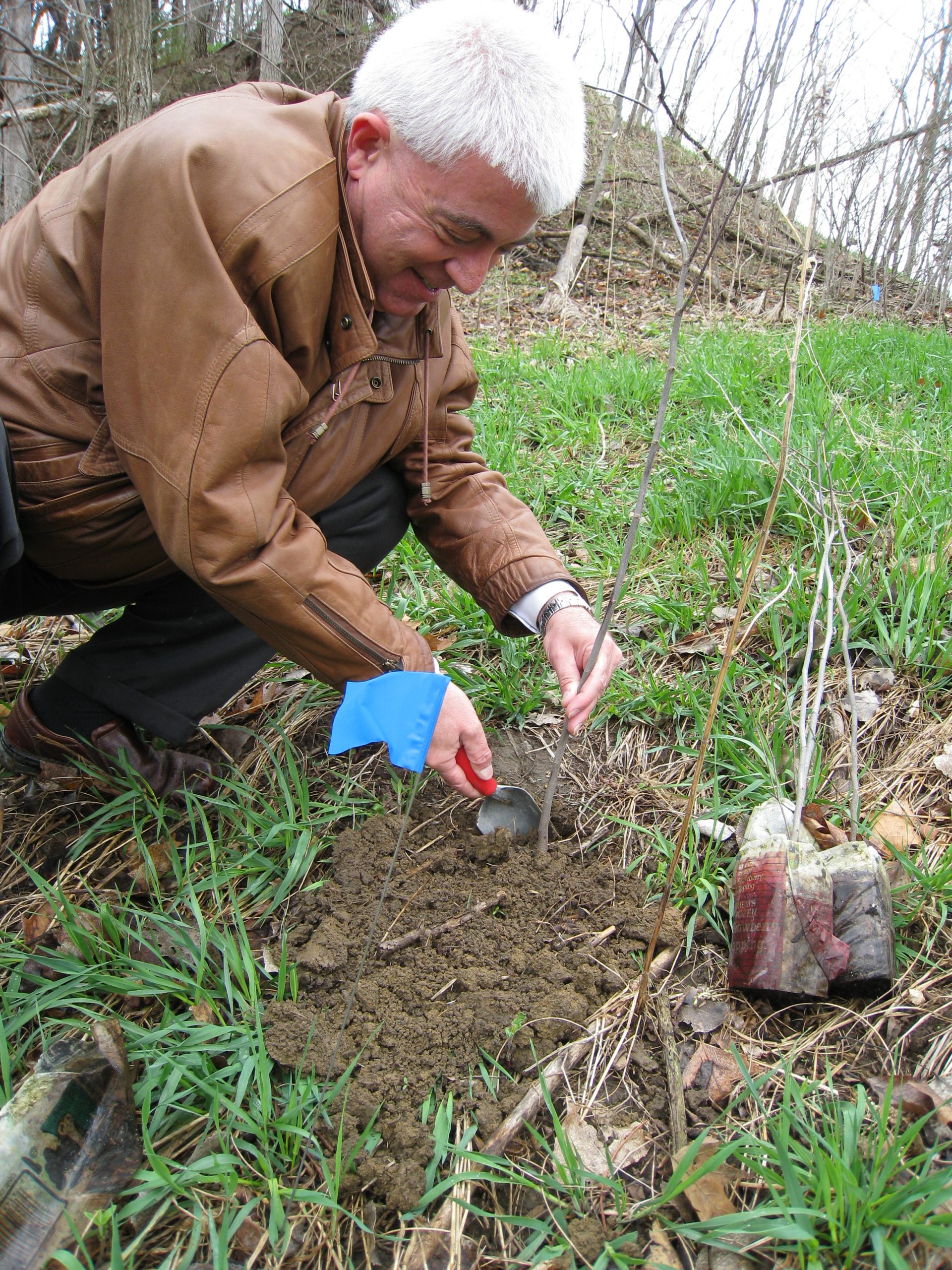
A boots-on-the-ground type, Spencer Crews was a hands-on director. -

The blowout penstemon (Penstemon haydenii) is an early colonizer of open sand dune habitats (blowouts) and is threatened by the decline in the processes that create this habitat. Photo credit: Mark Bellis, courtesy of Lauritzen Gardens. -
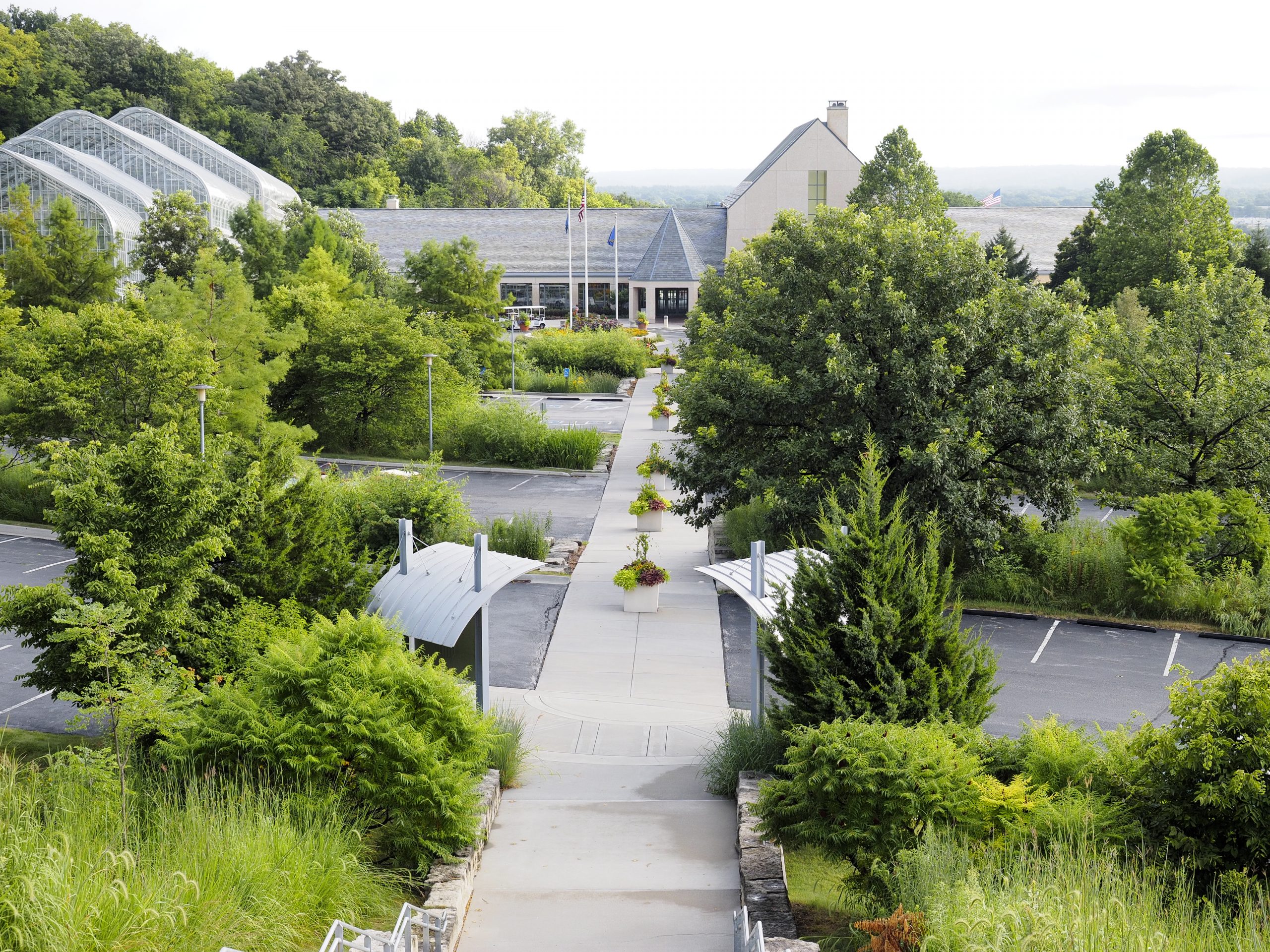
The Parking Garden at Lauritzen Gardens. Photo credit: Larry Fasnacht, courtesy of Lauritzen Gardens.
Get Updates
Get the latest news and conservation highlights from the CPC network by signing up for our newsletters.
Sign Up Today!Donate to CPC
Thank you for helping us save plant species facing extinction by making your gift to CPC through our secure donation portal!
Donate Today







